Welcome to our Programming Course.
This course is for complete beginners, and has been extensively trialled with High School students learning Computer Programming for the first time. It has a proven track record of being able to get everyone up and running with the world's most popular Beginner Programming Language: Visual Basic VB.Net.
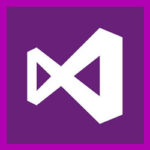
The entire course is built around gradual Step By Step Learning Lessons using individual videos which fully explain all concepts and skills.
Unlike other courses, our lessons include the Complete Build from the ground up, rather than just giving a "Show and Tell" of randomly completed components.
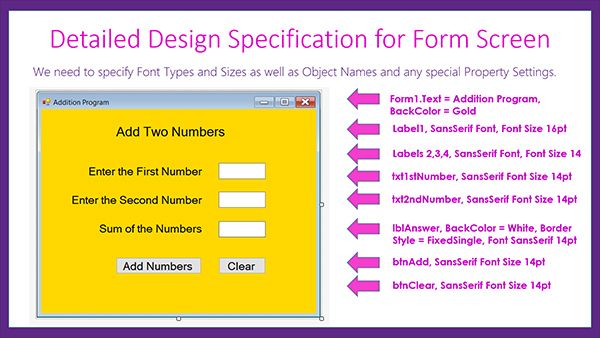
Each Learning lesson is fully self contained, but builds on the previous lessons, so it is very important to do the lessons in order if you are a Beginner Programmer. If you already have programming experience, then simply choose the lesson which you need.
If you only want to do one lesson at a time, then that is just fine, there is the free YouTube video which takes you through in detail from start to finish.
Most of our videos have a Timeline Index in the YouTube Description under the actual video, so that you can easily jump to the sections of most interest when re-watching videos again later on.
Accompanying the video are various resource materials such as PDF Summaries of Presentations, Word Documents containing full listings of the program code, as well as the required Windows Forms Detailed Designs.
The downloadable PDF Summary Guide shows all of the steps that were completed in the video, so that you do not have to re-watch the Video, and can refer back to the Guide at any time. Students have found the Guide much easier to use for completing subsequent Projects, rather than trying to go back through an entire How To Video. The Guide is an invaluable part of the full learning package.

The course modules are listed individually below.
Simply click the link for a given module to be taken to its Lesson Page.
If you want to do the full course, then work through the modules in the order set out below.
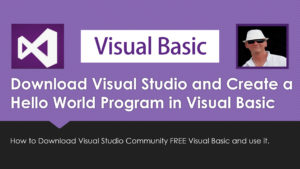
Introduction to Visual Basic Lesson
In this Lesson we show you how to download the free Visual Studio Community applications which will provide all of the components needed to program in Visual Basic.
We then introduce the basics of Microsoft Visual Basic, the world's most popular beginner programming language for Educational Learning, by making a Hello World Program.
Click here to Go to the Lesson

Data Types and Naming Conventions Lesson
In this lesson we look at the Standards and Conventions for naming Program Variables and Objects on Forms. We explain how to use Camel Case and Hungarian Notation. We cover Visual Basic and Python Data Types, and discuss the differences between Float, Double, and Decimal data types used for storing numbers which have decimal places in them.
Click here to Go to the Lesson
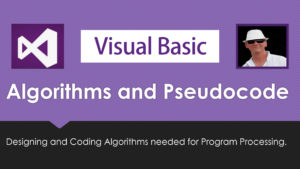
Algorithms Pseudocode VB Console Programs Lesson
In this beginner's lesson we fully explain Algorithms and Pseudocode for Program Design, including Sequence, Selection, and Iteration. Practical examples are provided to aid comprehension of all theoretical concepts. We also show you how to create quick and easy Visual Basic Console Programs, which can be used to experiment with and test Pseudocode.
Click here to Go to the Lesson
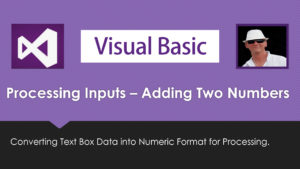
Getting Inputs to Add Two Numbers Lesson
In this lesson we develop a simple VB Program which adds together two User Input Numbers. Included are the Application Design Process for the Form and the Program Pseudocode. For getting User Input from the Form and converting it to numeric format we use the Val() function, and the Casting as a Double CDbl() function. For Input Validation we use Try.... Catch... End Try to pinpoint all input errors and send message alerts to the User.
Click here to Go to the Lesson
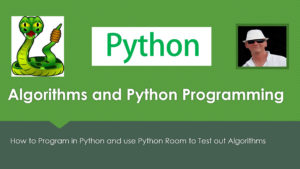
Beginners Programming in Python Lesson
This introductory lesson is for people totally new to Python, as well as for programmers who have used some Visual Basic language and are interested in checking out Python.
We use the online "Python Room" emulator; however the code and ideas presented here should be okay to use in any installation of Python. At the end of the presentation we have five programming tasks which can be completed in Python.
Click here to Go to the Lesson
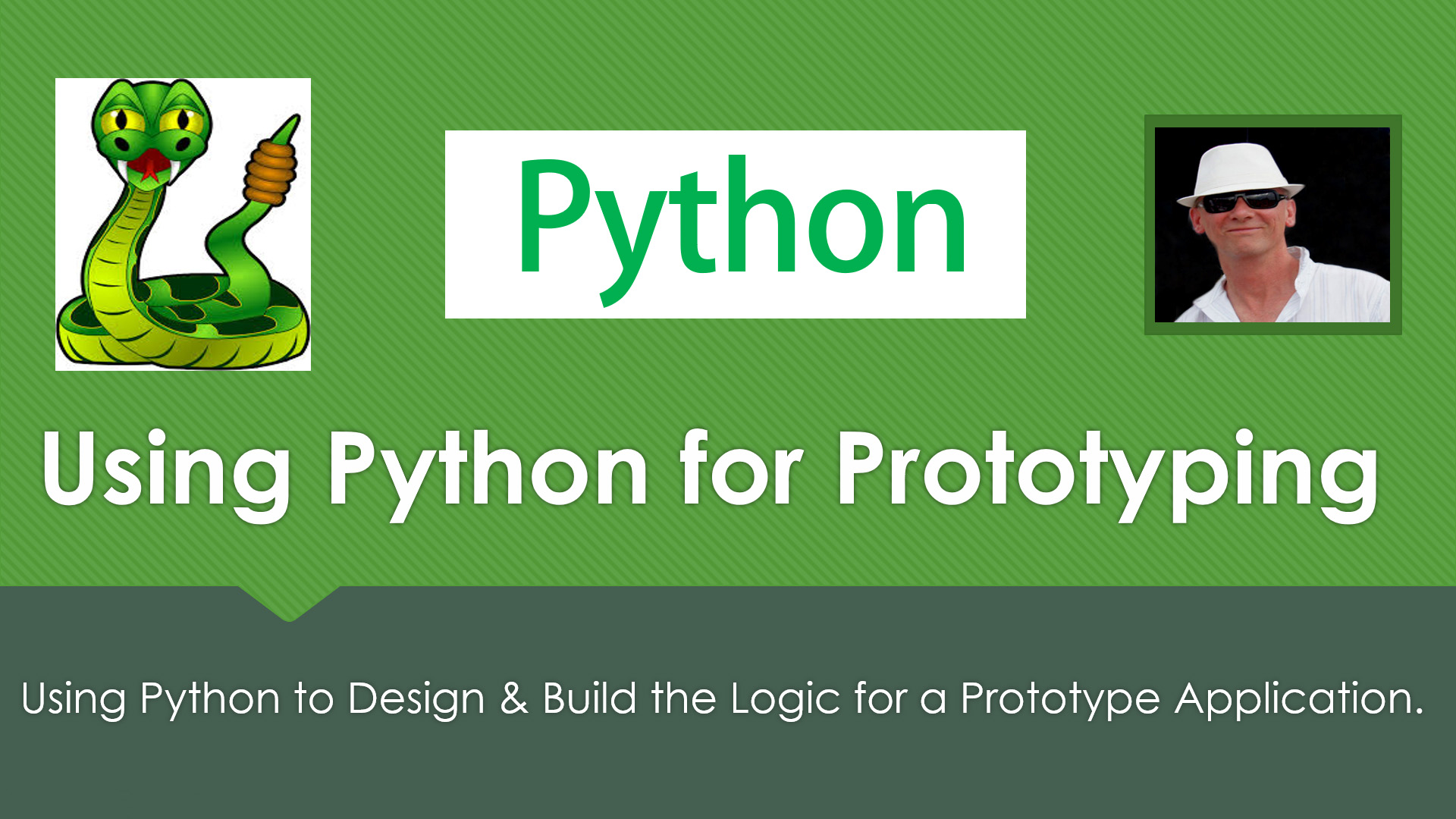
Using Python for Prototyping Lesson
This is a detailed and comprehensive lesson which shows how to build Prototype Applications using the Python Programming language.
Click here to Go to the Lesson
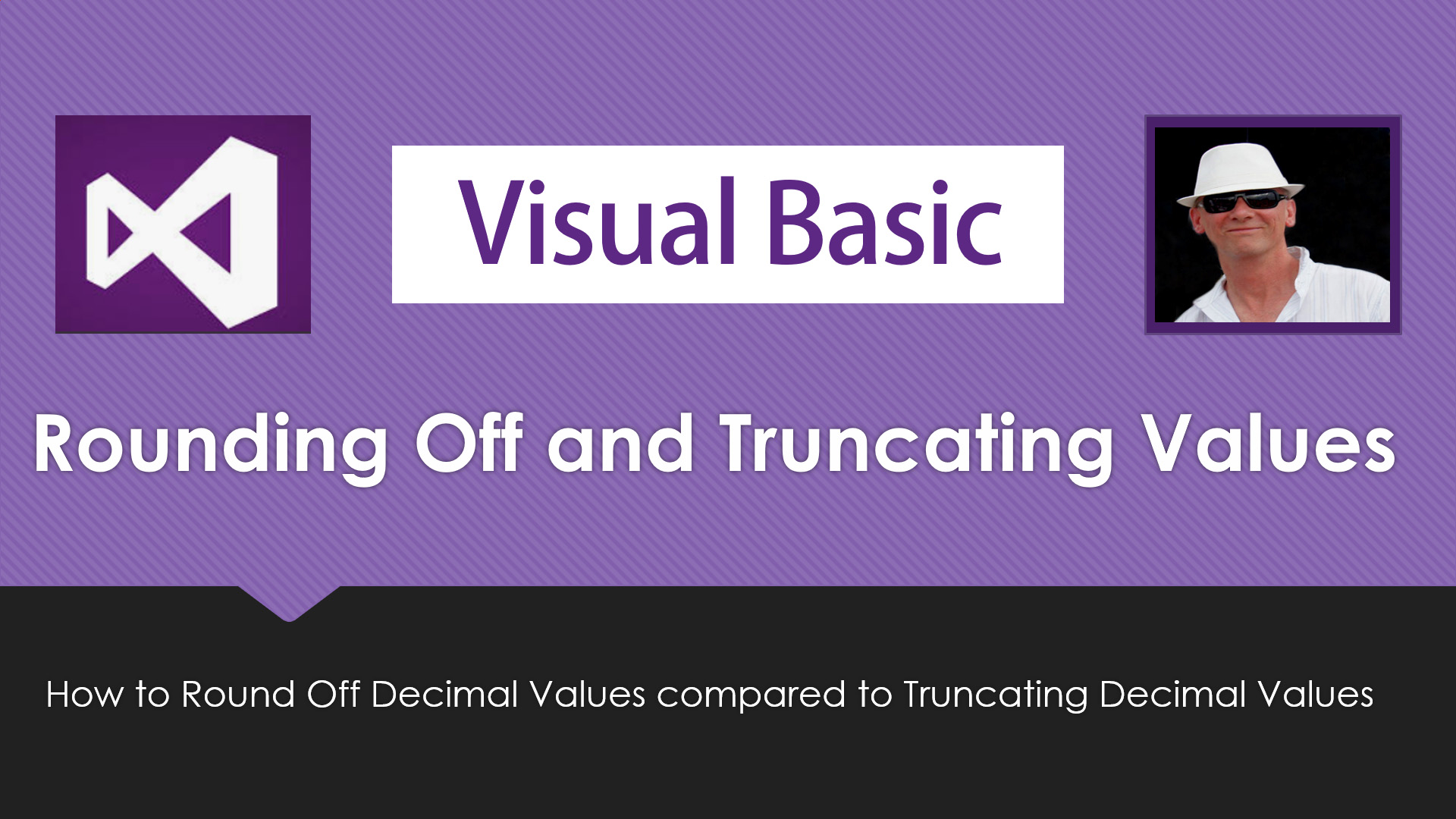
Truncating and Rounding Off Numbers to Decimal Places Lesson
This lesson shows how to reduce the number of Decimal Places on the Result Answers from Mathematical Formulas and Calculations.
Click here to Go to Lesson
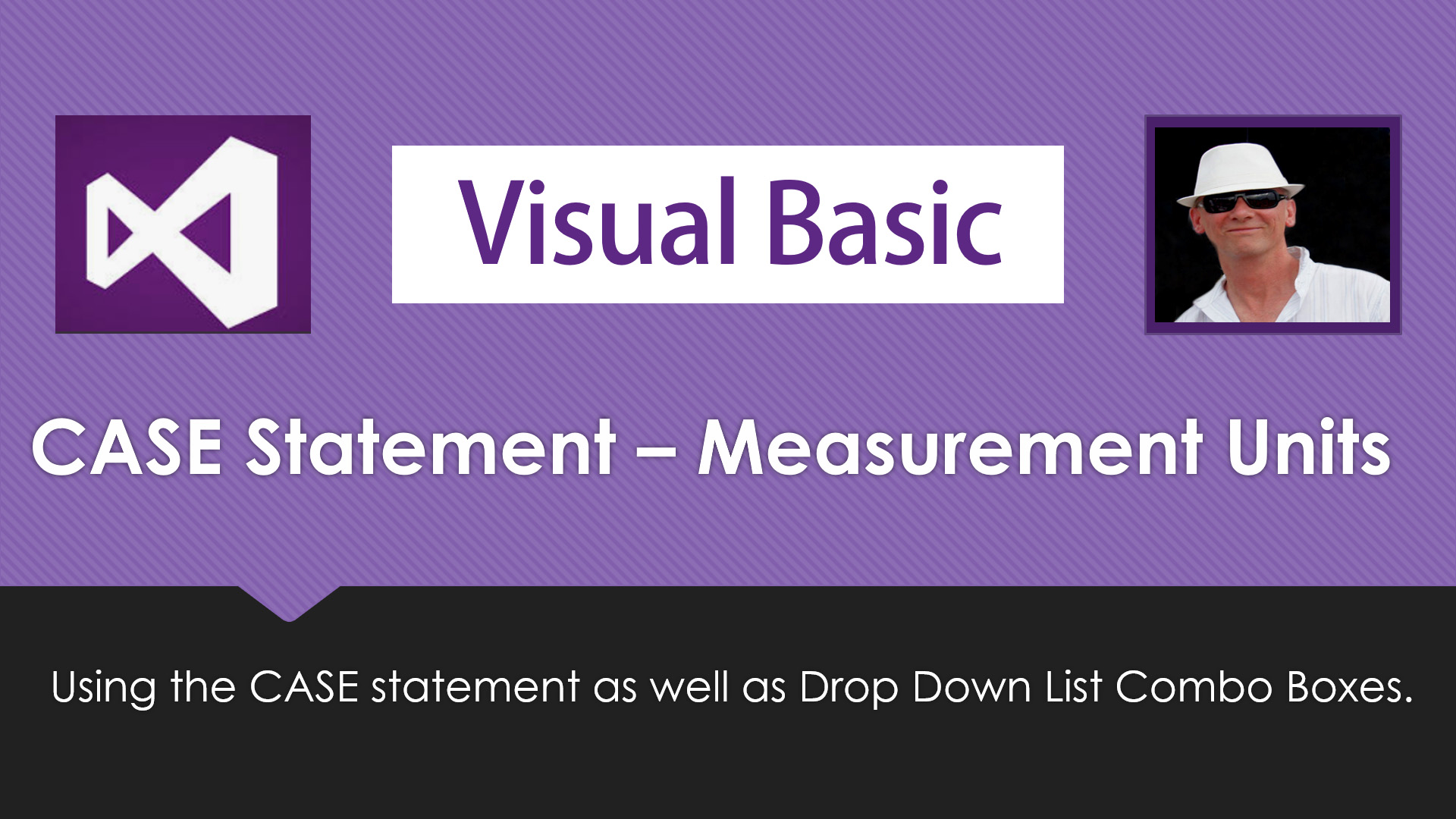
Case Statement and Combo Box Drop Down List Lesson
In this lesson we show you how to setup and use the VB Case Statement as an alternative to If...ElseIf statements. We also show how to set up and use Combo Box Drop Down Lists.
Click here to Go to Lesson
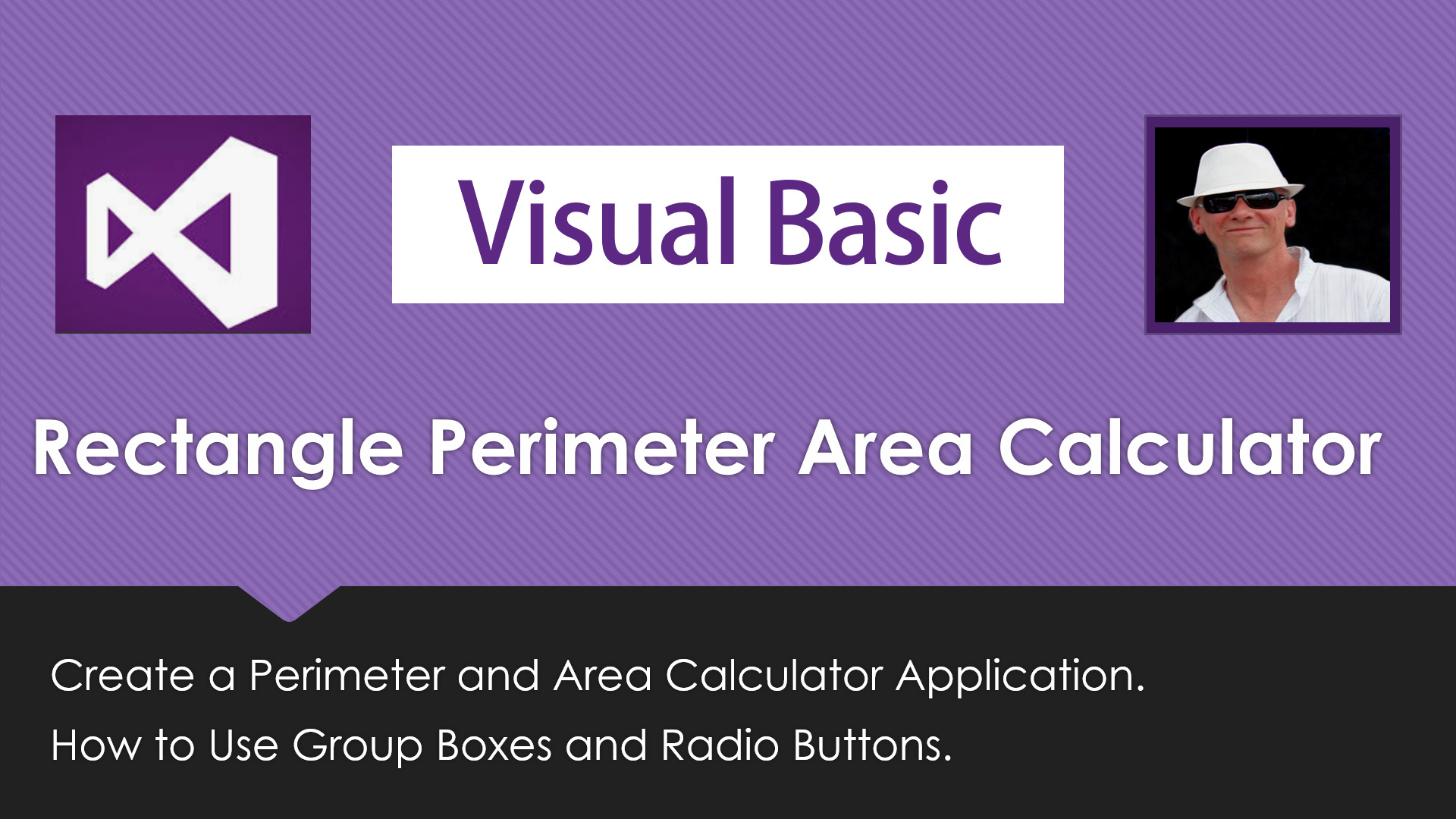
Rectangle Area and Perimeter Calculator Lesson
In this lesson we show you how to build a Calculator Application which includes learning how to use Group Boxes and Radio Buttons and write Modularized Program Code including Validation of User Inputs.
Click here to Go to Lesson
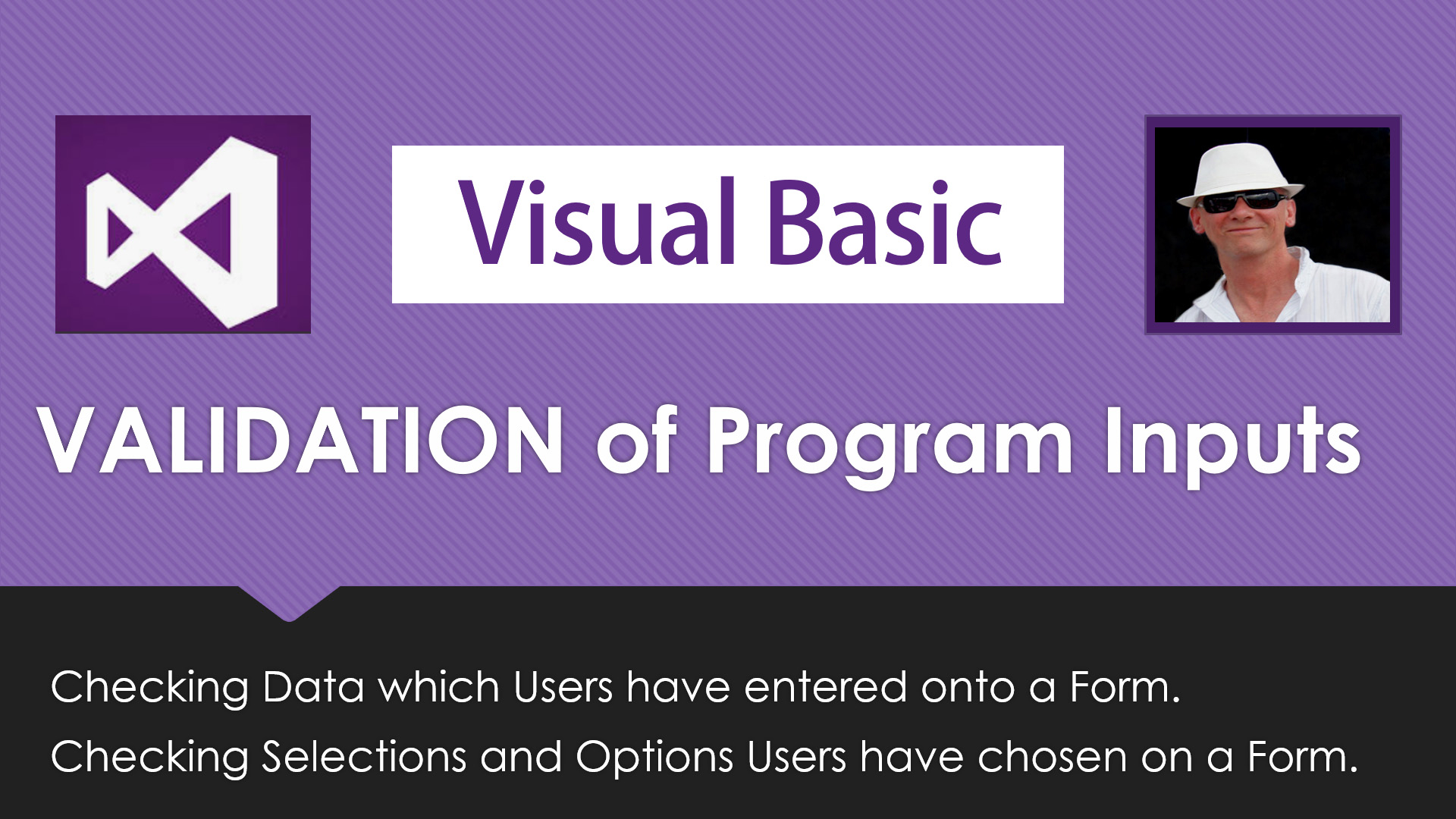
Program Validation for Checking User Inputs
In this lesson we look at How to Check the Inputs which Users enter onto Screen Forms. This includes data they have typed in as well as selections they have made.
Click here to Go to Lesson
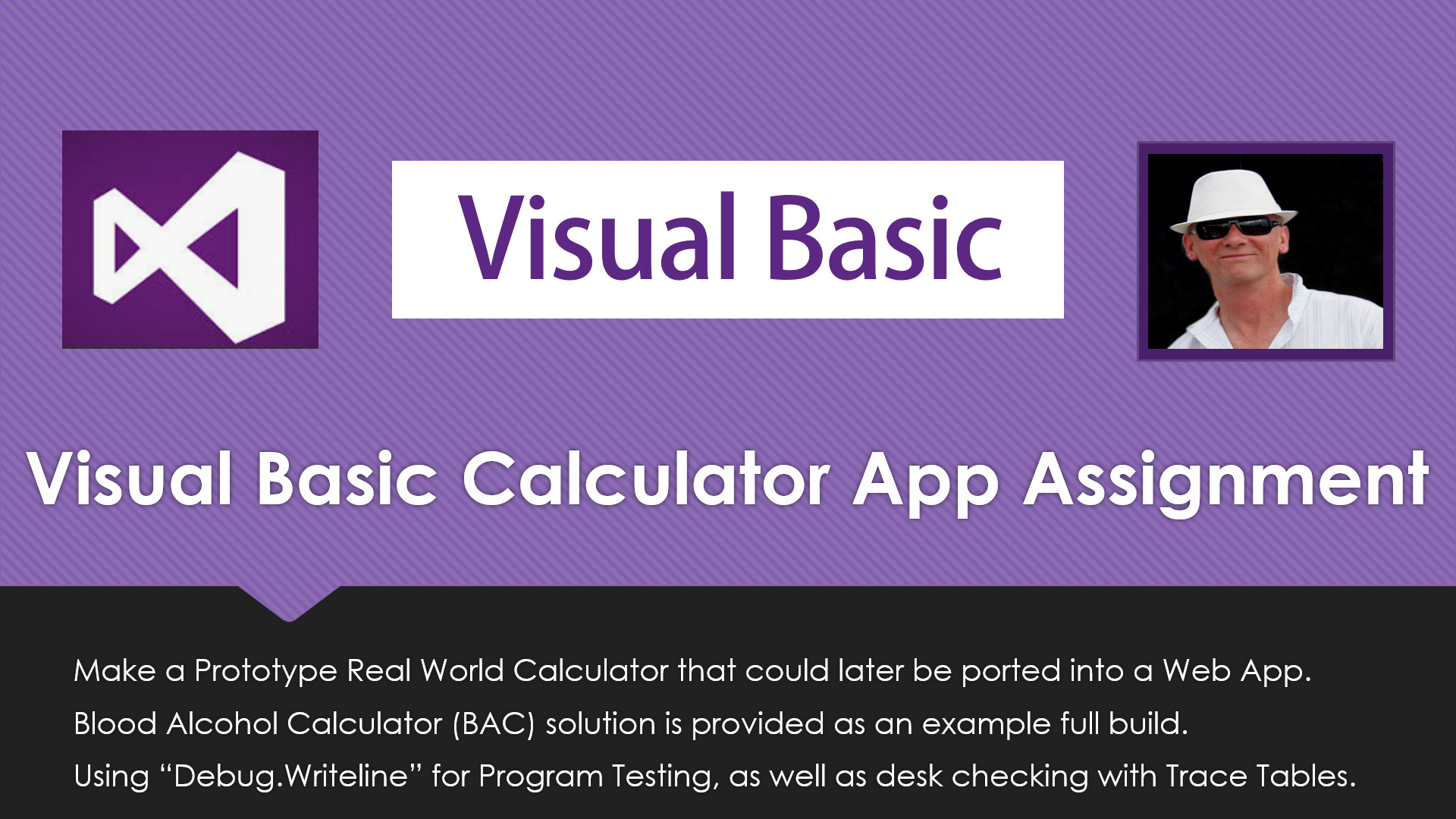
Visual Basic Real World Calculators Assignment
In this lesson we set you a Learning Consolidation Assignment.
The assignment is to make a Prototype Real World Calculator that could later be ported/converted into a Web App.
Click here to Go to Lesson
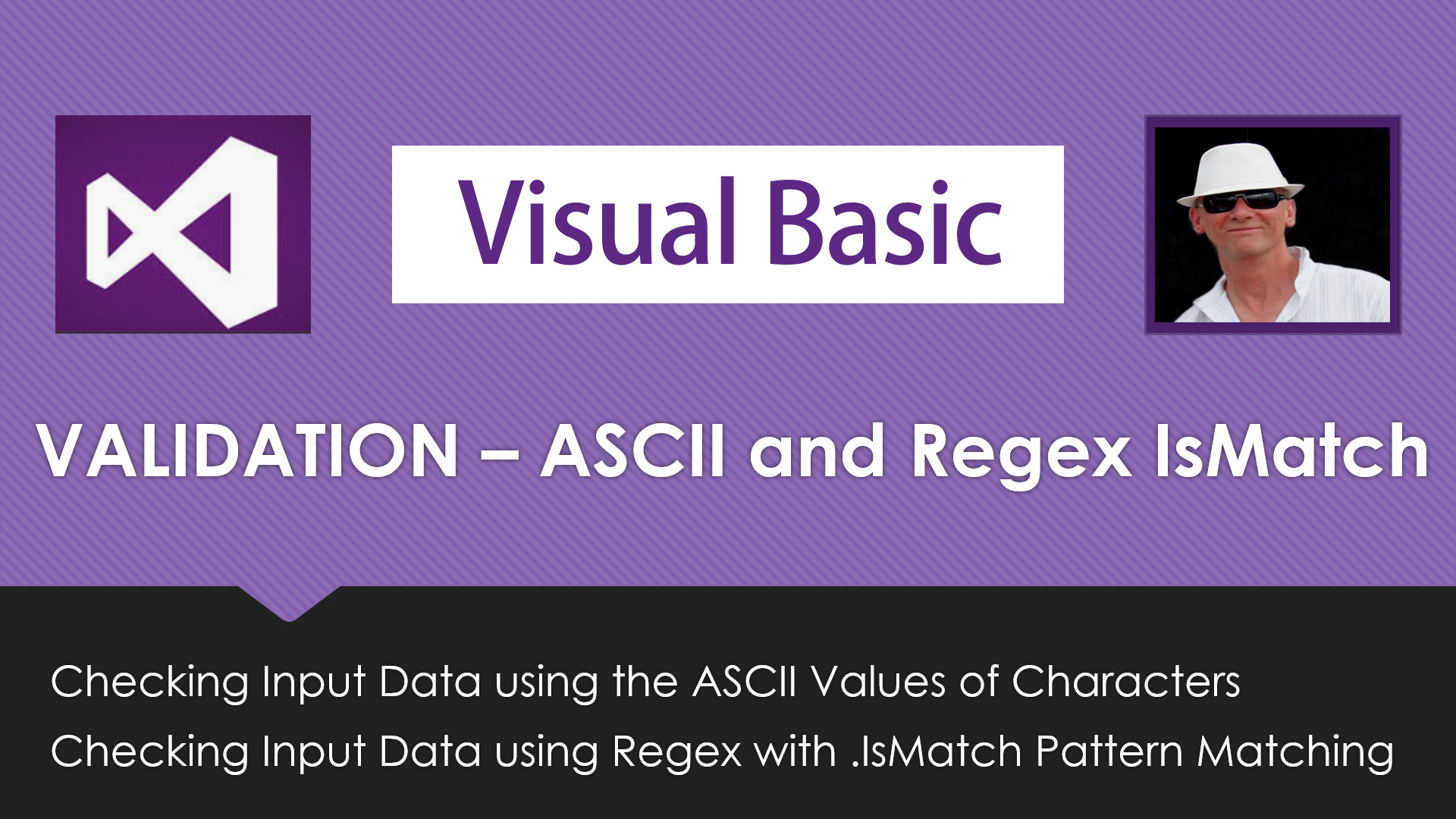
Visual Basic Validations Using ASCII Codes and VB Regex
In this lesson we look at some specialised methods of Checking the Inputs which Users enter into Text Boxes on Screen Forms. This includes checking the ASCII Code values , and using Regex Pattern Matching for hyphenated Phone Numbers and Email Addresses.
Click here to Go to Lesson
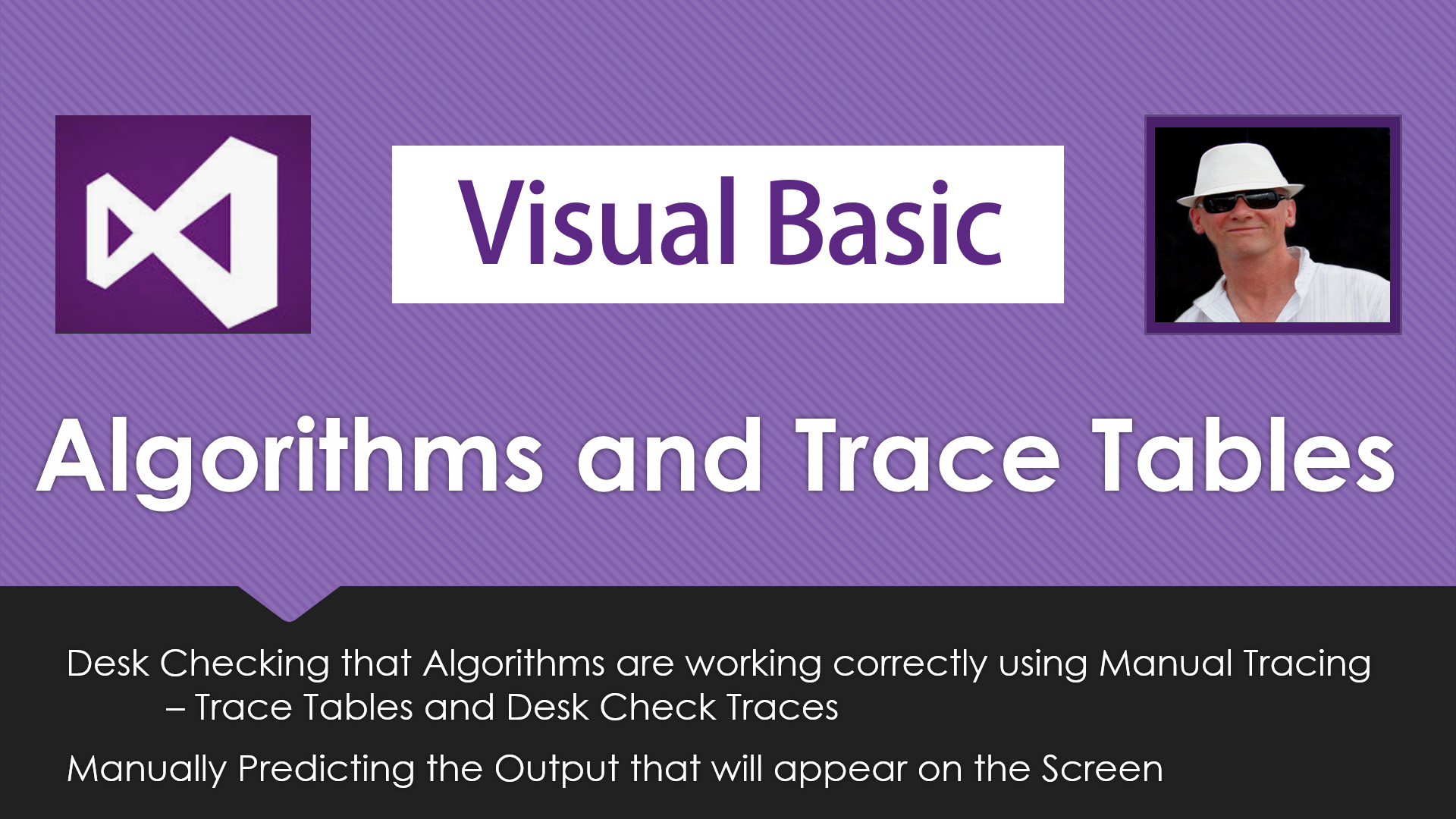
Algorithms Trace Tables and Desk Checks
In this lesson we look at using "Trace Tables" and "Desk Check Trace" techniques to check manually if Algorithms are working correctly.
Click here to Go to Lesson
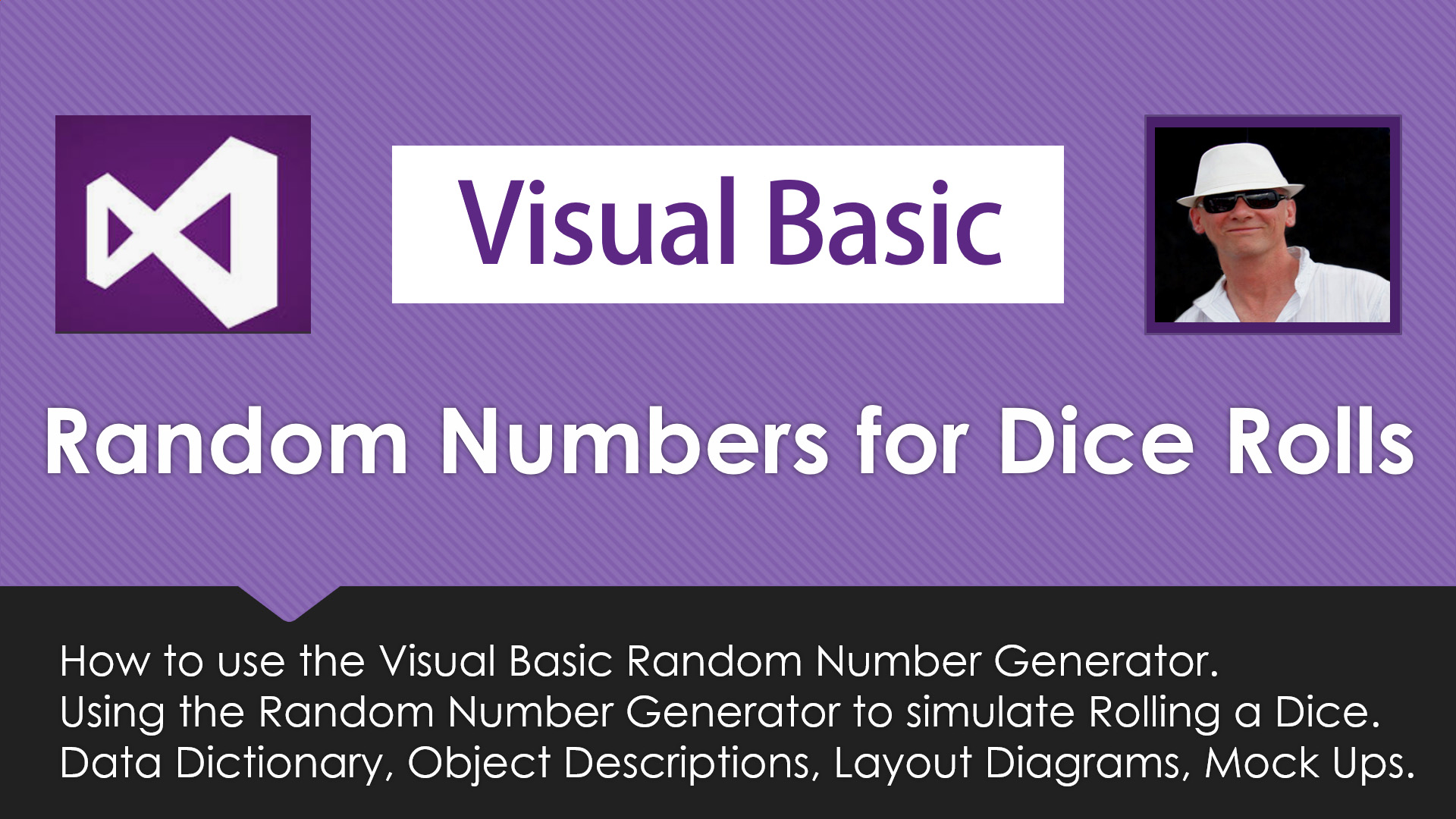
Using Random Numbers for Dice Rolls
In this lesson we use the Random Number Generator to make a Dice Rolling Simulator. We also fully Formalise the Application Design by including "Mock Up" or "Layout Diagram" annotated designs for Forms, as well as Form "Object Descriptions", "Pseudocode" for Program Design, and a "Data Dictionary" of program code variable names.
Click here to Go to Lesson
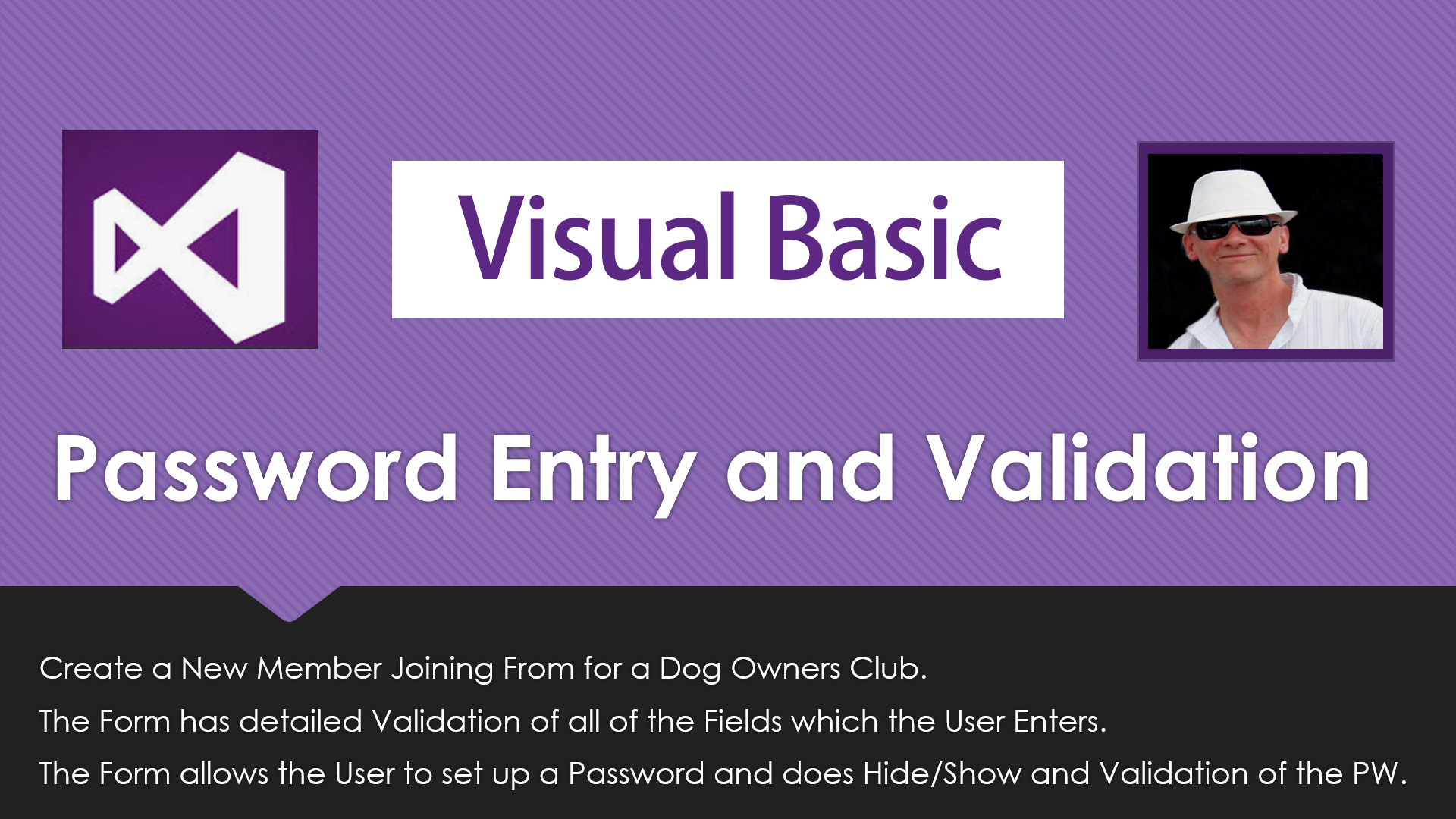
Show Hide Password Entry and Validation
In this lesson we look at how to Validate all Input Fields on a Membership Application Form. This includes entering Passwords which have a Hide and Show Button for them.
Click here to Go to Lesson
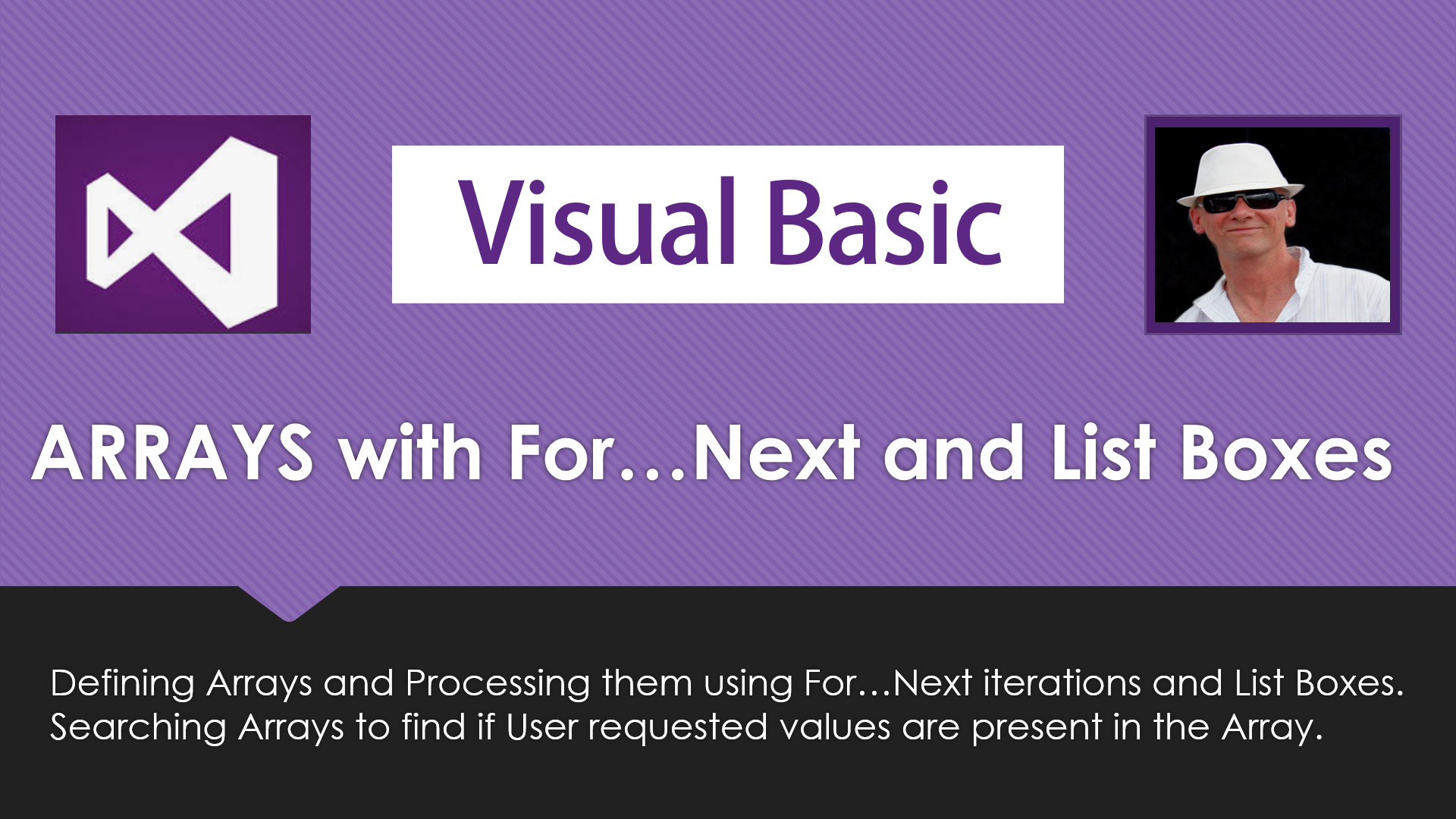
Arrays List Boxes and Linear Search
In this lesson we introduce two new Storage Structures: Arrays and List Boxes. We show how to Search an Array, and how to get its contents out onto a Screen Form using a Message Box and a List Box.
Click here to Go to Lesson
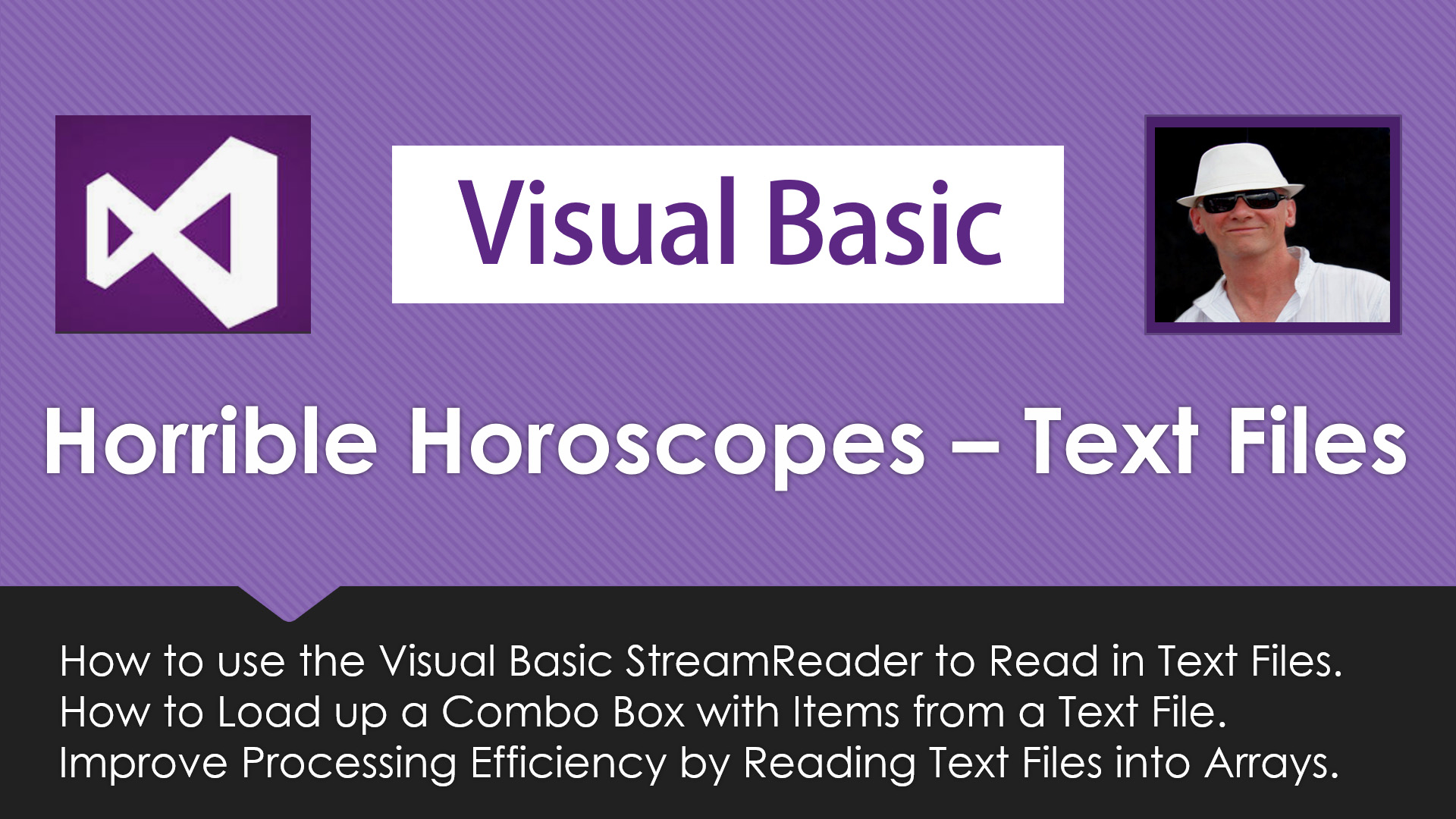
VB StreamReader Text Files and Arrays
In this lesson we introduce VB File IO using Stream Reader, to read in external data stored in Text Files. We also Load a Combo Box and a Program Array using external Text Files.
Click here to Go to Lesson
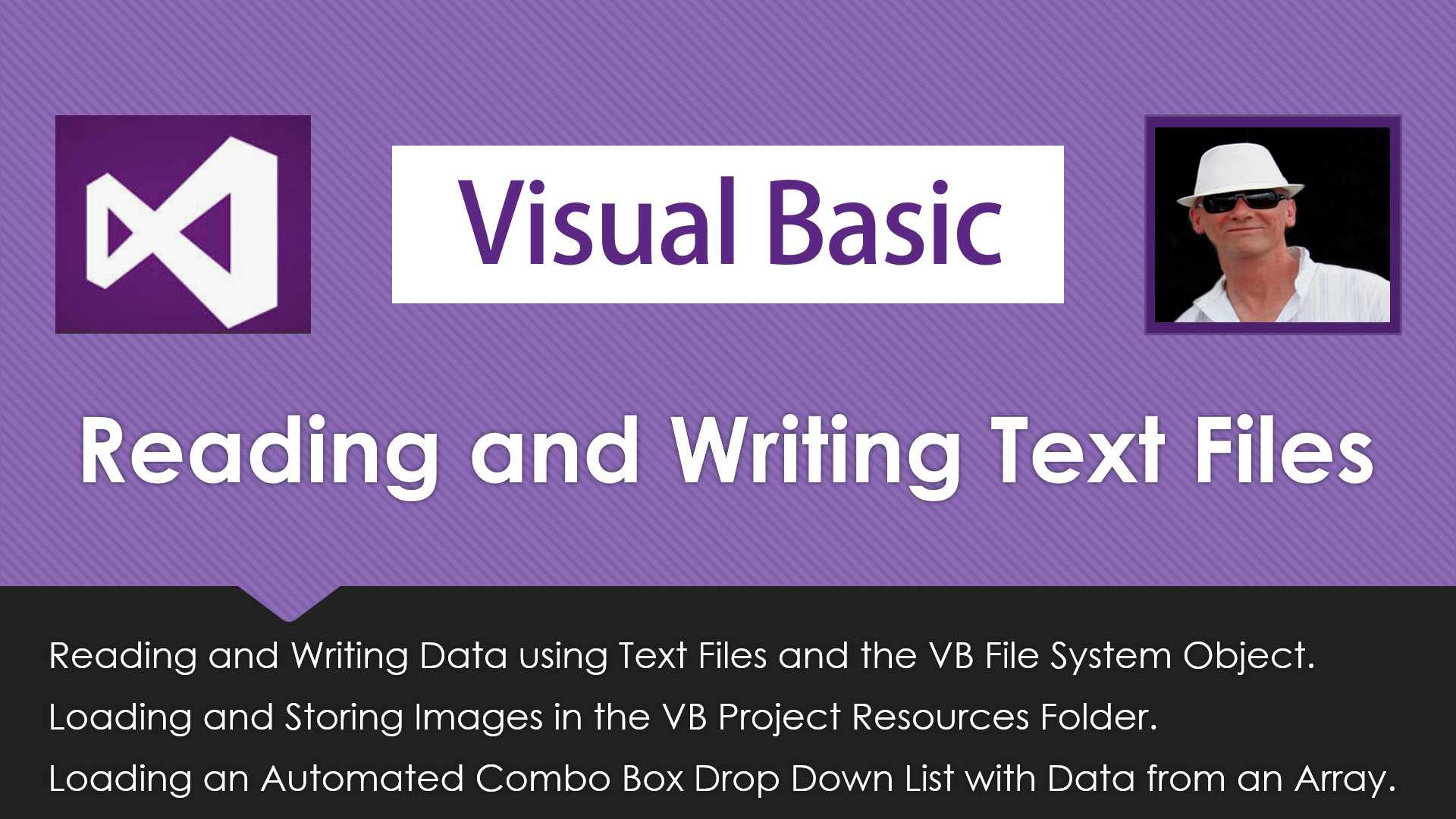
VB Read and Write Text Files and Images
In this lesson we use Visual Basic's built in file processing to Read in and then Update a Text File. We also load and process Images using VB's Resources Storage. This processing includes using Combo Boxes and Arrays as we build a Data Driven Application.
Click here to Go to Lesson
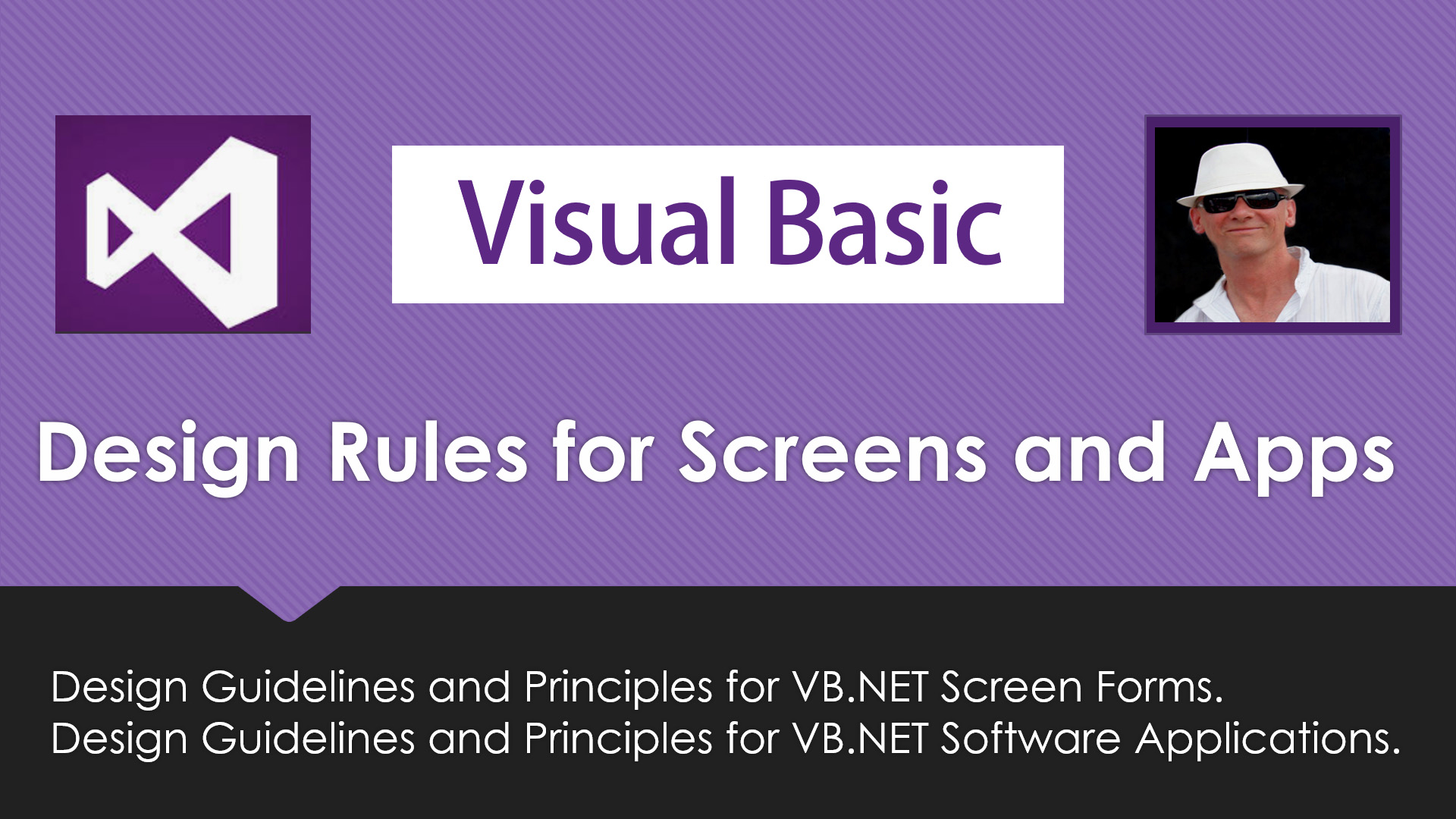
VB Design Guide for Screens and Apps
In this lesson we show how to create great Designs for Screen Forms and Applications. This includes all of the Theory and Technical Terms as well as plenty of Real World Examples.
Click here to Go to Lesson
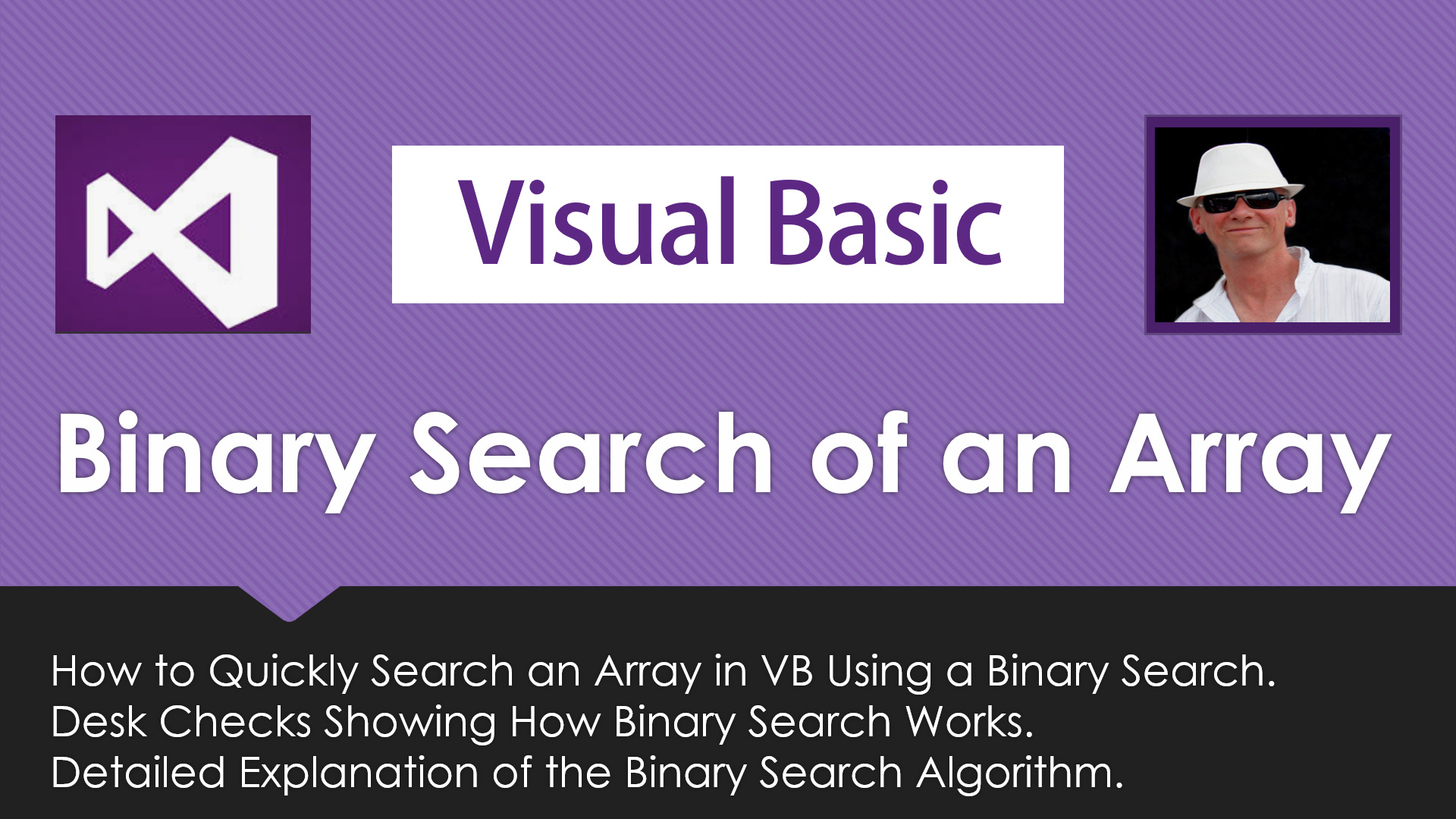
VB Binary Search of an Array
In this lesson we go through practical examples of Binary Searches, as well as doing Manual Desk Checks and Program Debug Traces.
Click here to Go to Lesson
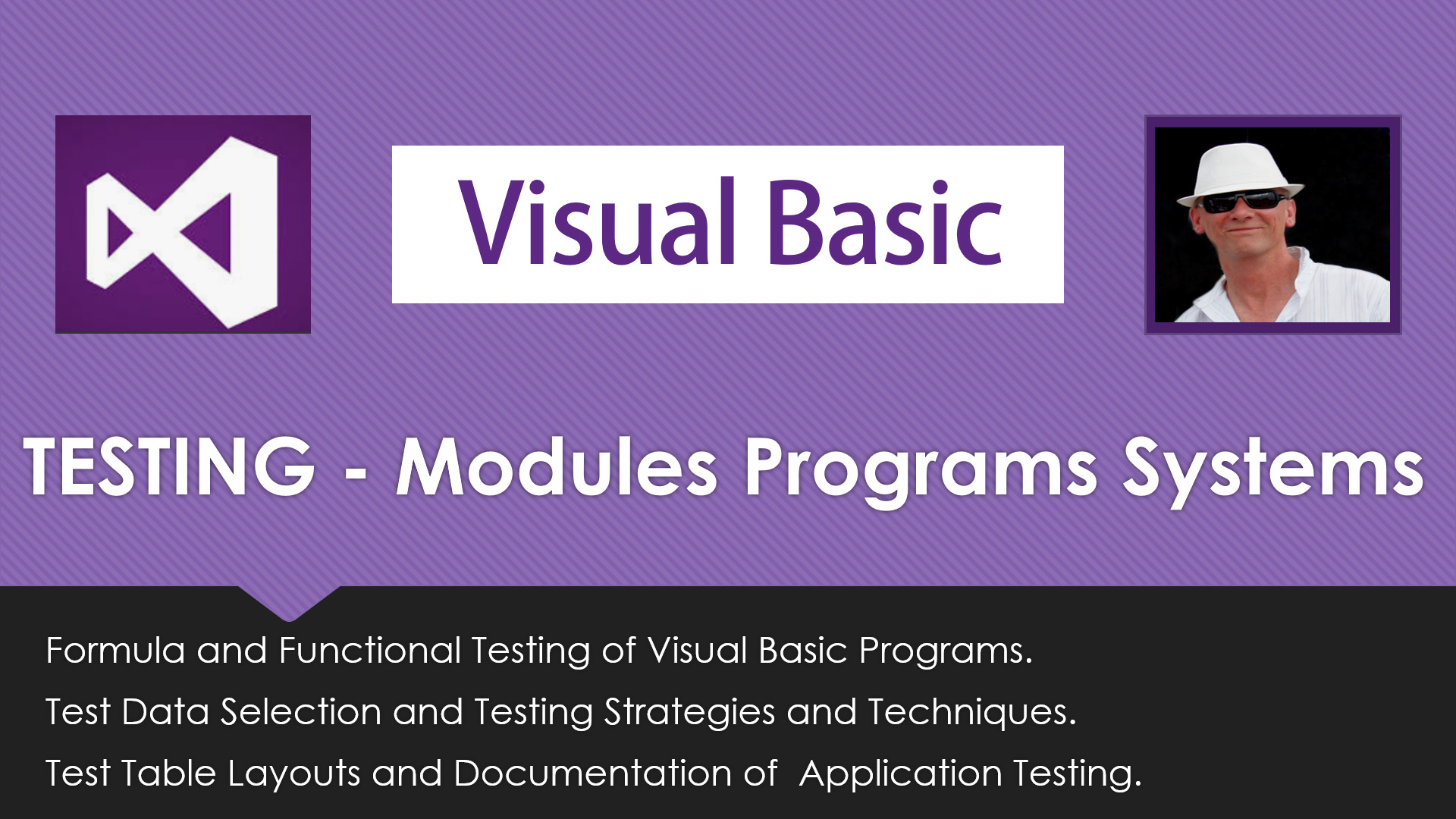
VB Testing Subroutines and Programs
In this lesson we go through all aspects of Software Testing including Module Testing, Unit Testing, Systems Testing, Integration Testing, and User Acceptance Testing.
Click here to Go to Lesson
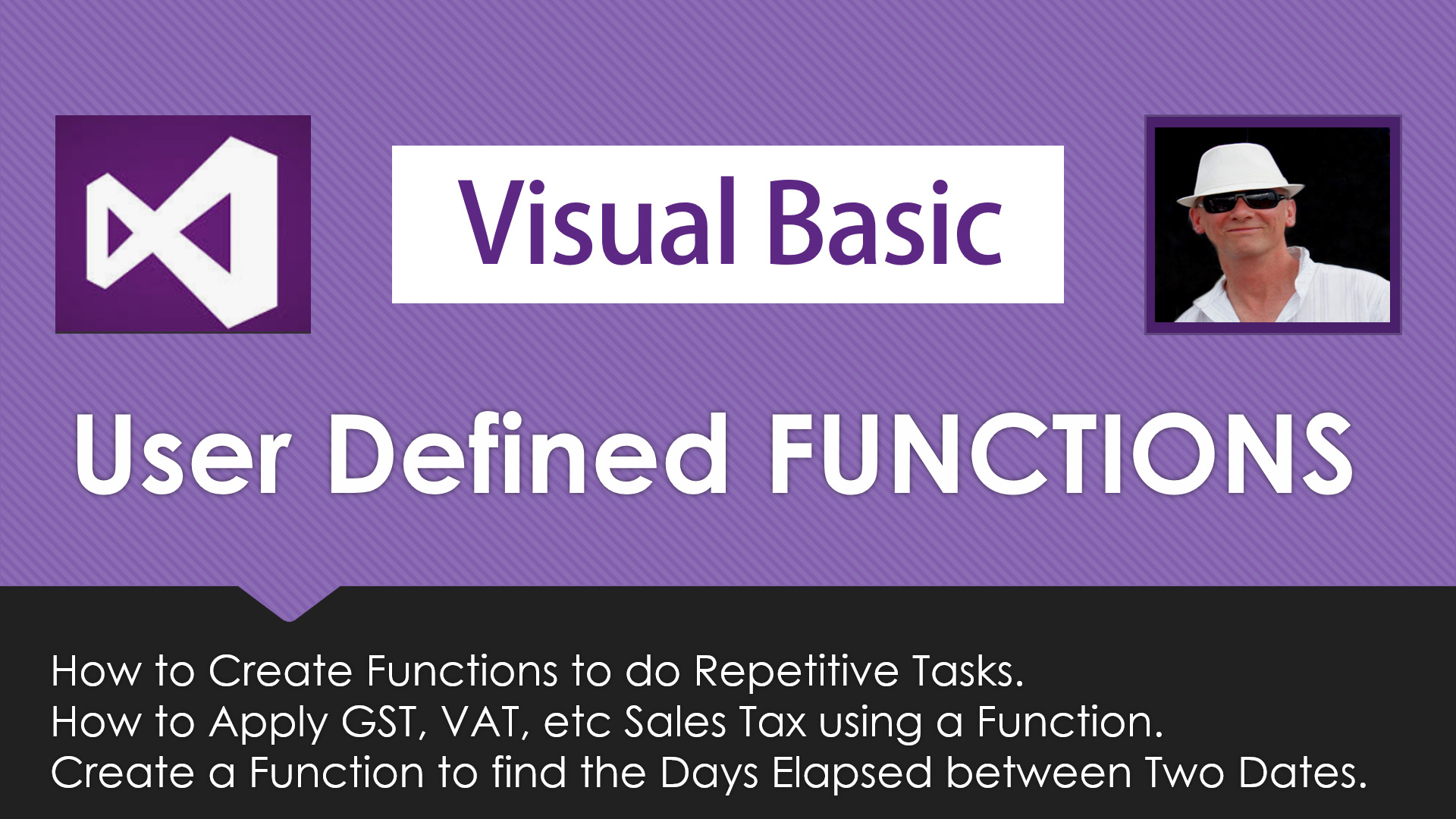
VB Creating Custom Functions
In this lesson we fully explain and provide examples of Visual Basic built in functions, as well as showing you how to create your own custom functions.
Click here to Go to Lesson
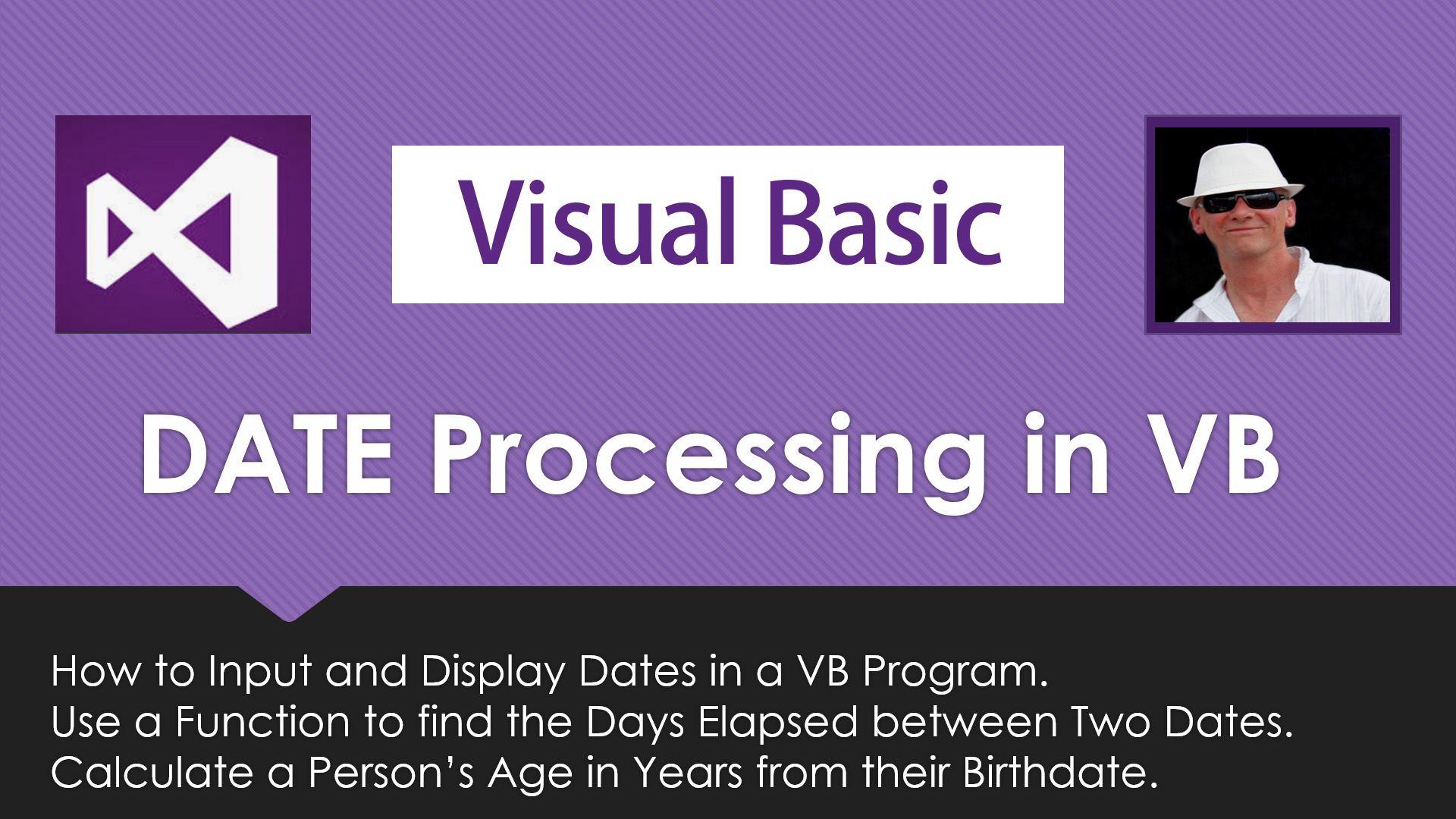
VB Dates Input Output and Processing
In this lesson we fully explain and provide examples of Visual Basic Input and Output Formats for Dates. We also show how to do Date Arithmetic, create Custom Display Formats, and write Custom Functions for Processing Dates.
Click here to Go to Lesson
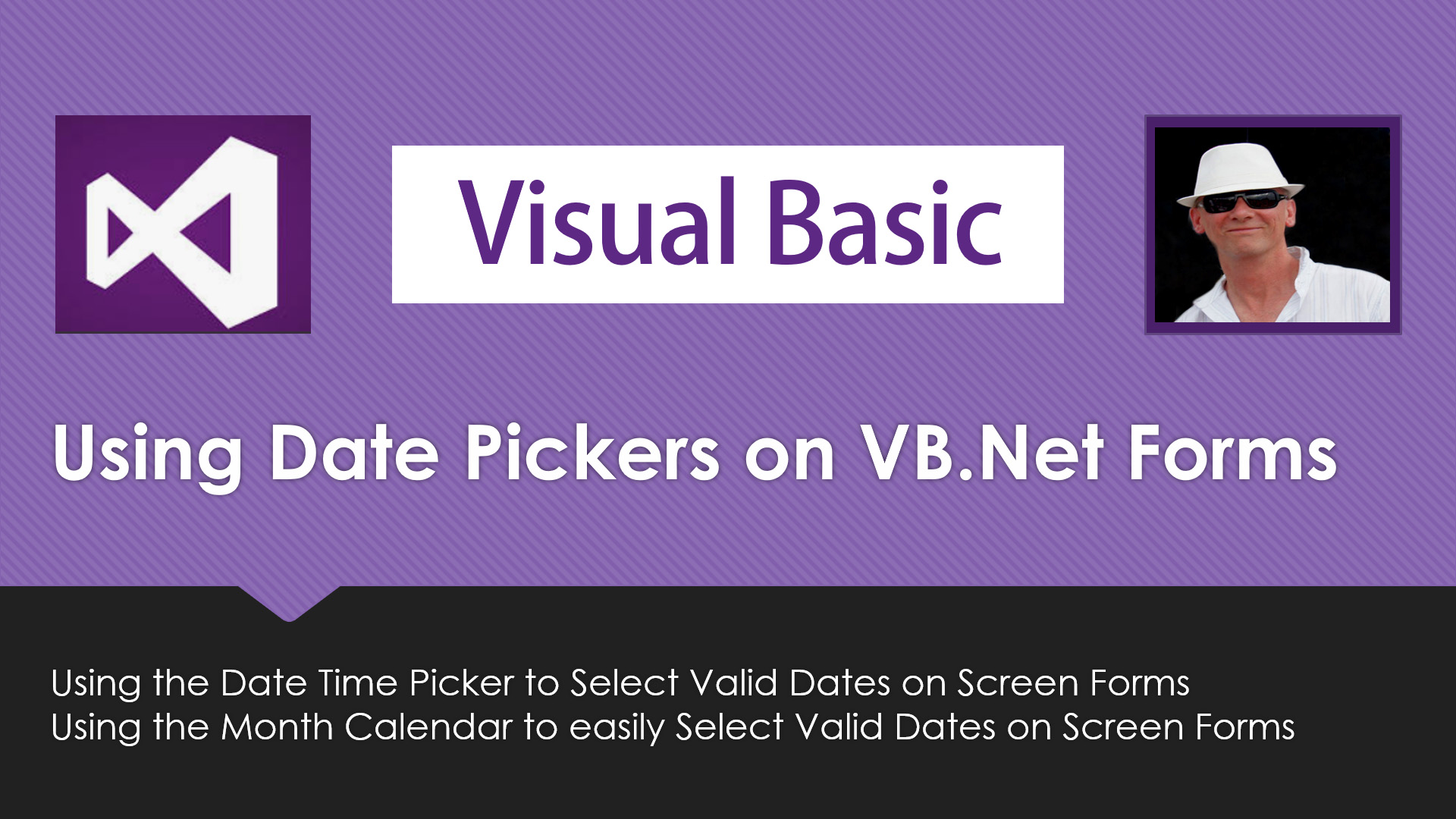
VB Date Calendar Pickers
In this lesson we explain how users can select Dates on Screen Forms by pick and clicking from a "Date Picker" Calendar display.
Click here to Go to Lesson
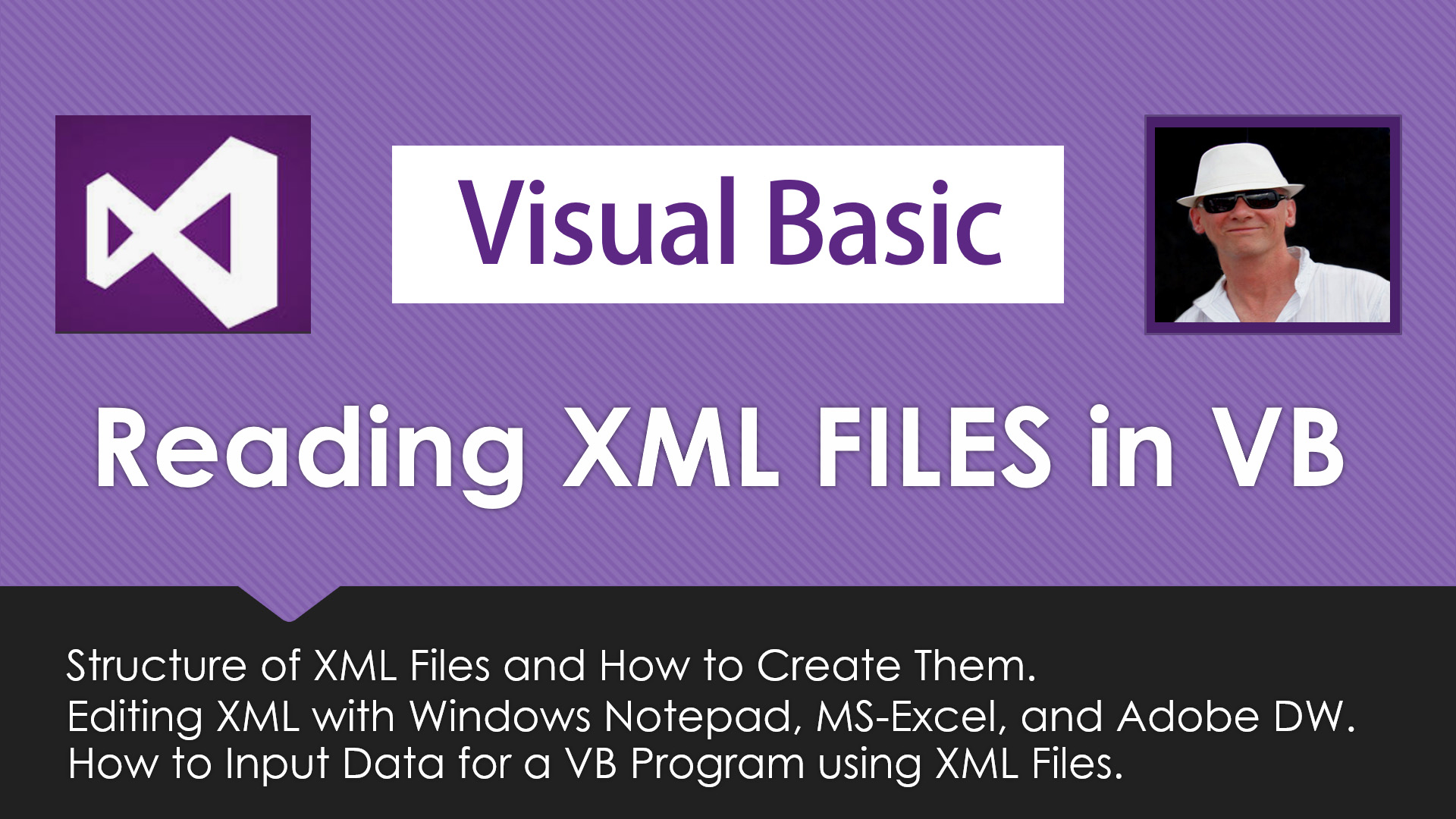
VB Reading and Displaying XML Files
In this lesson we fully explain the XML File Format. We also show How to Create, View, Display, and Edit XML Files with Visual Basic and other Apps such as Notepad and MS-Excel.
Click here to Go to Lesson

VB Data Tables and Writing XML Files
In this lesson we show how to combine VB Data Tables with external XML Files so that we have permanent XML Storage of the data from the Tables on our Screen Form.
Click here to Go to Lesson
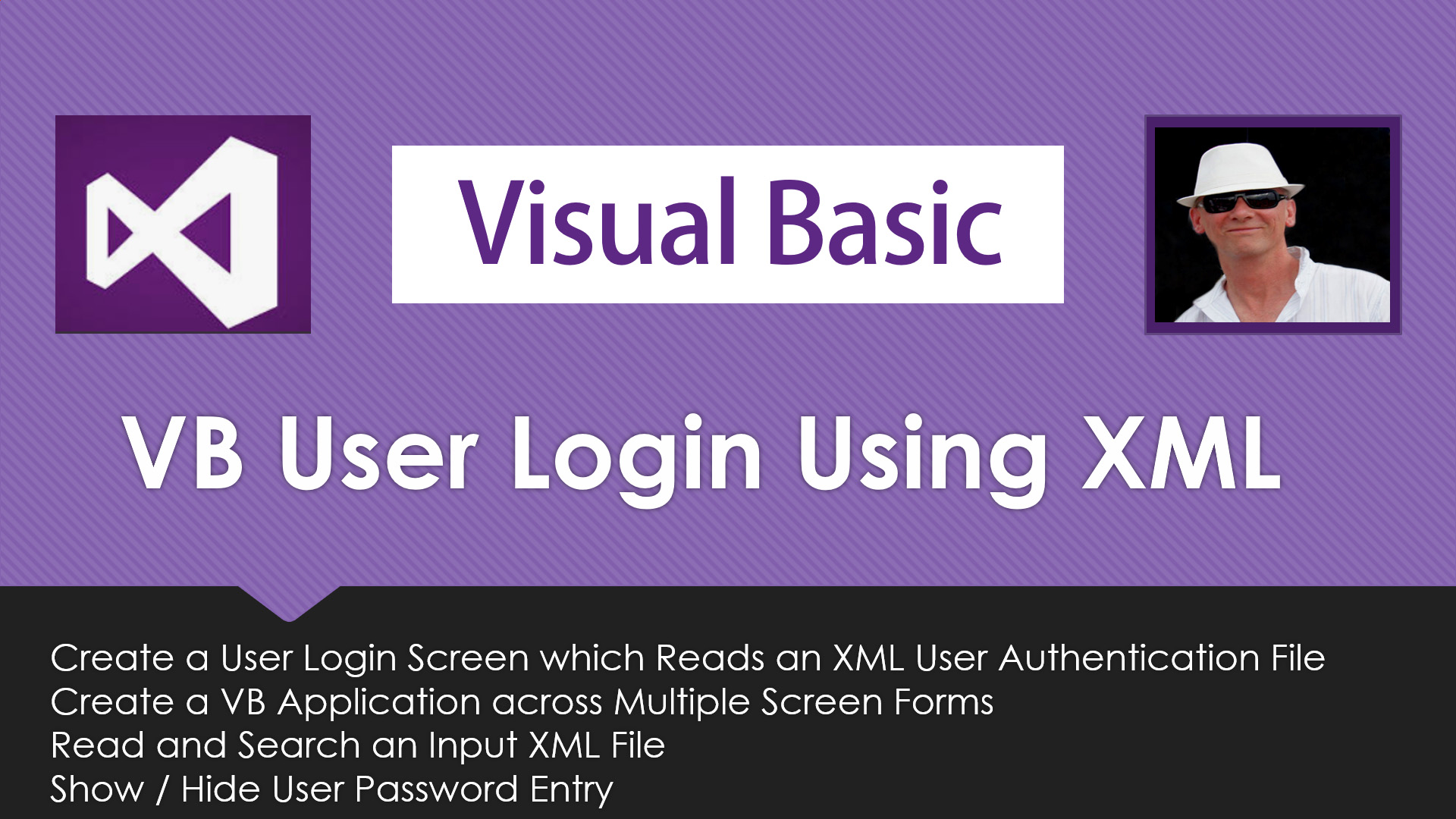
VB User Login Using XML File
In this lesson we show how to combine a VB User Login Screen with an external XML File of User Details so that we can authenticate User ID and Password.
Authenticated Users are then taken to the Main Menu Screen for our Application.
Click here to Go to Lesson
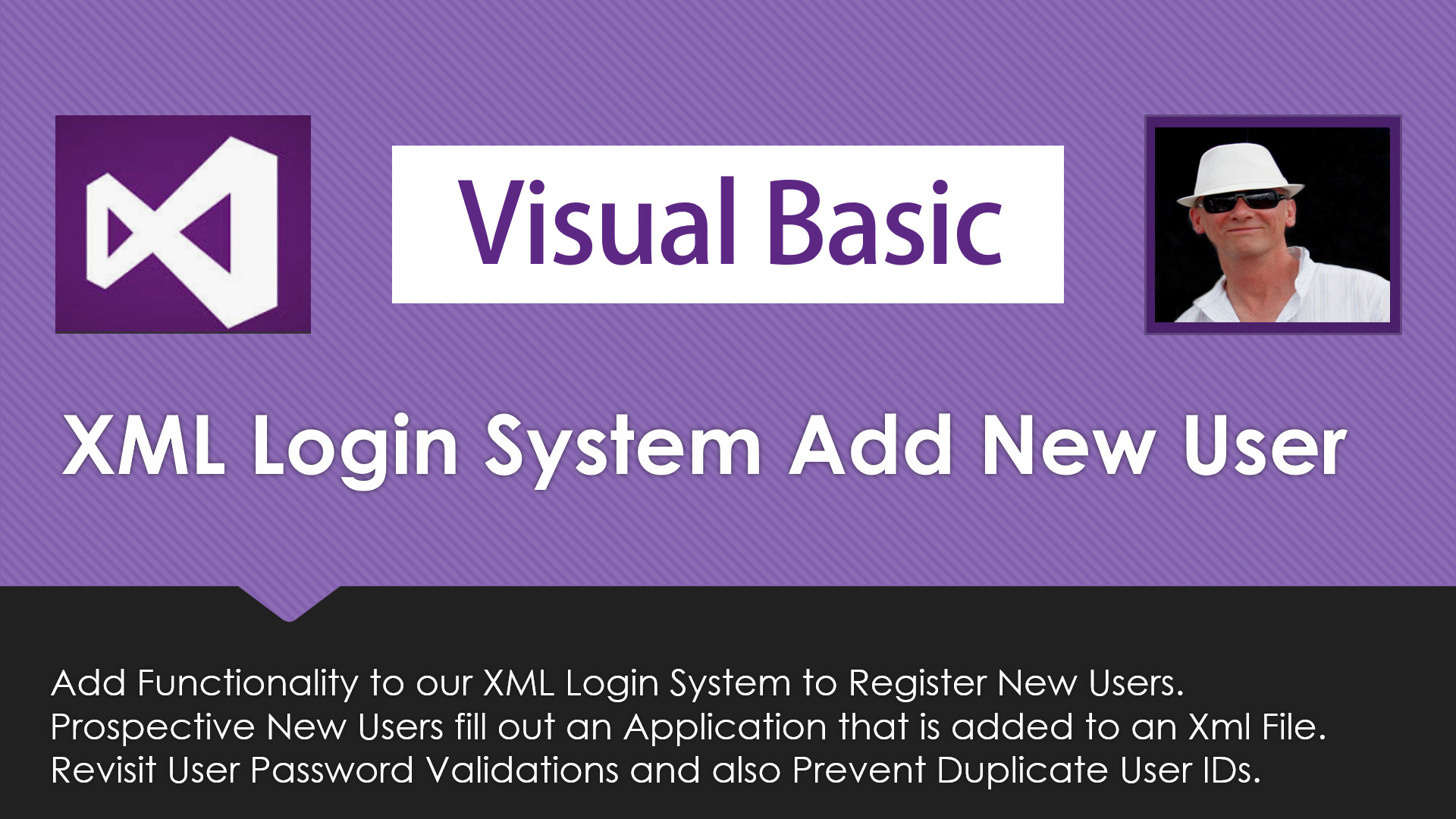
VB Login System Add New User Using XML File
In this lesson we add the functionality for New Users to Register for the Tennis Dream Team Application. This lesson builds on our previous XML User Login Lesson. You need to have done this previous lesson before doing this one.
Click here to Go to Lesson
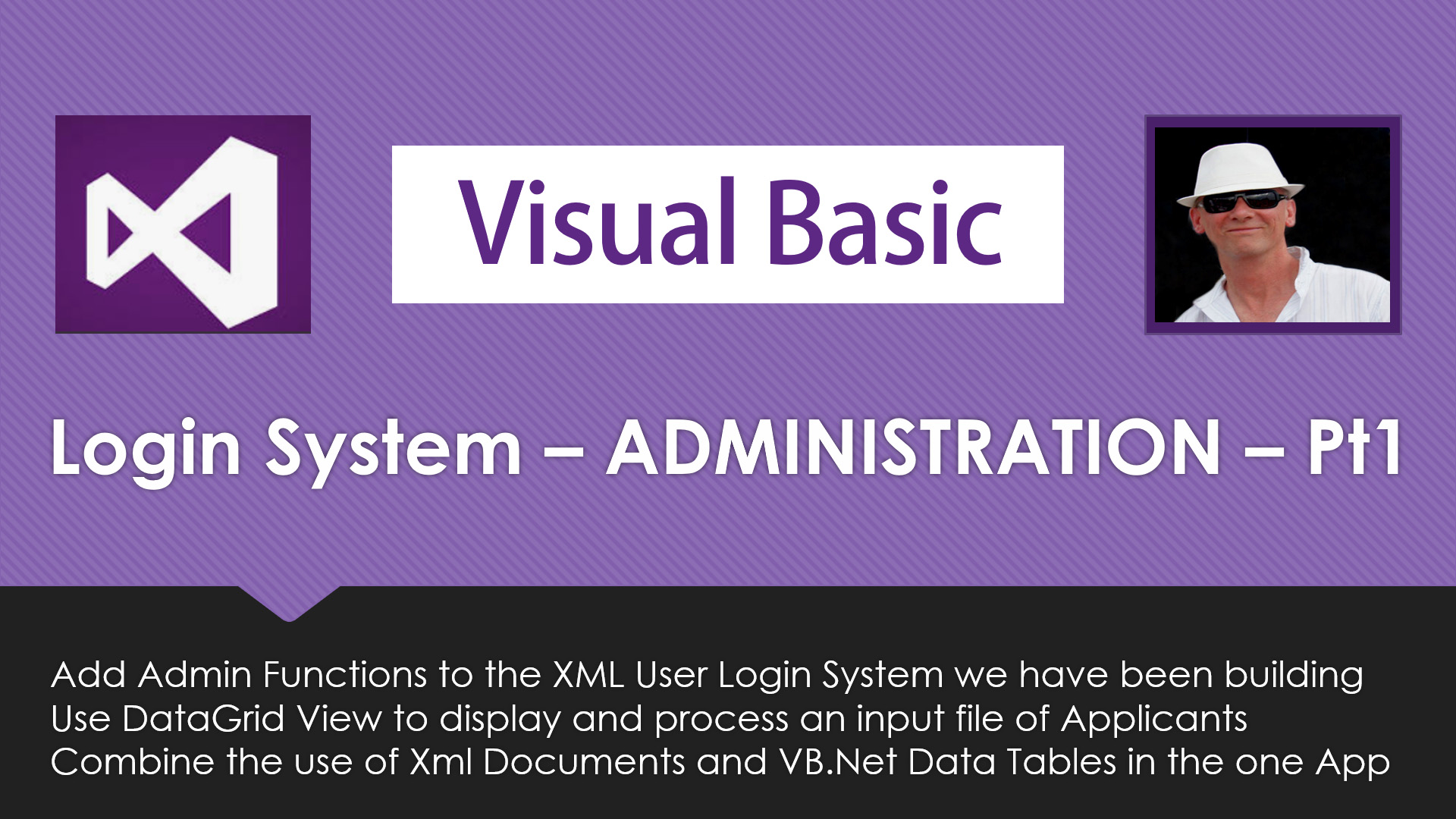
VB Login System Administration - Part 1
In this lesson we add the functionality for the first part of the System Administration Function. This lesson builds on our previous "VB User Login Using XML" and "XML Login System Add New User" Lessons.
Click here to Go to Lesson
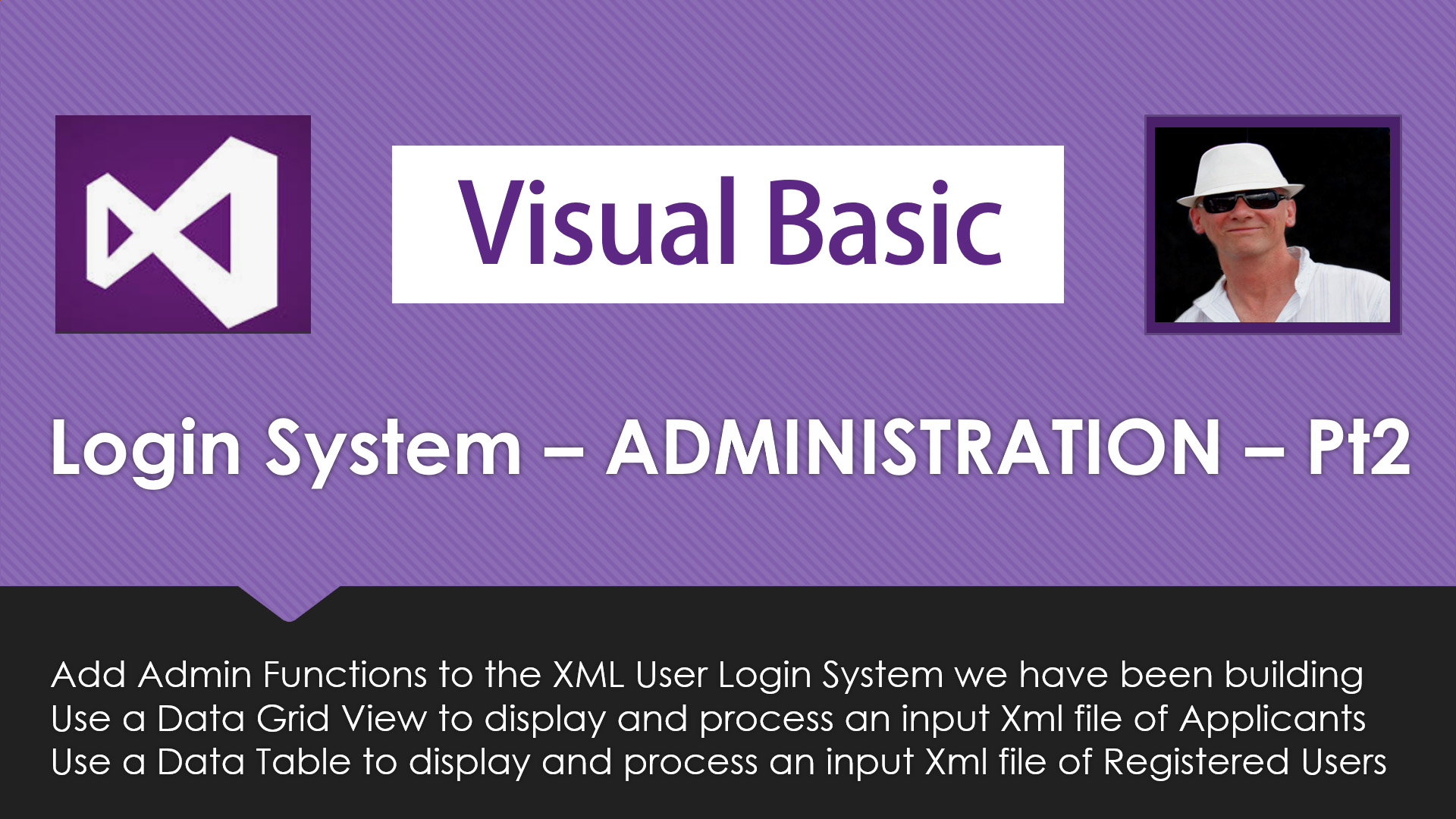
VB Login System Administration - Part 2
In this lesson we add Save, Delete, Add, Modify functionality to the Nav Bars which we built in the first part of the System Administration Function Form.
Click here to Go to Lesson
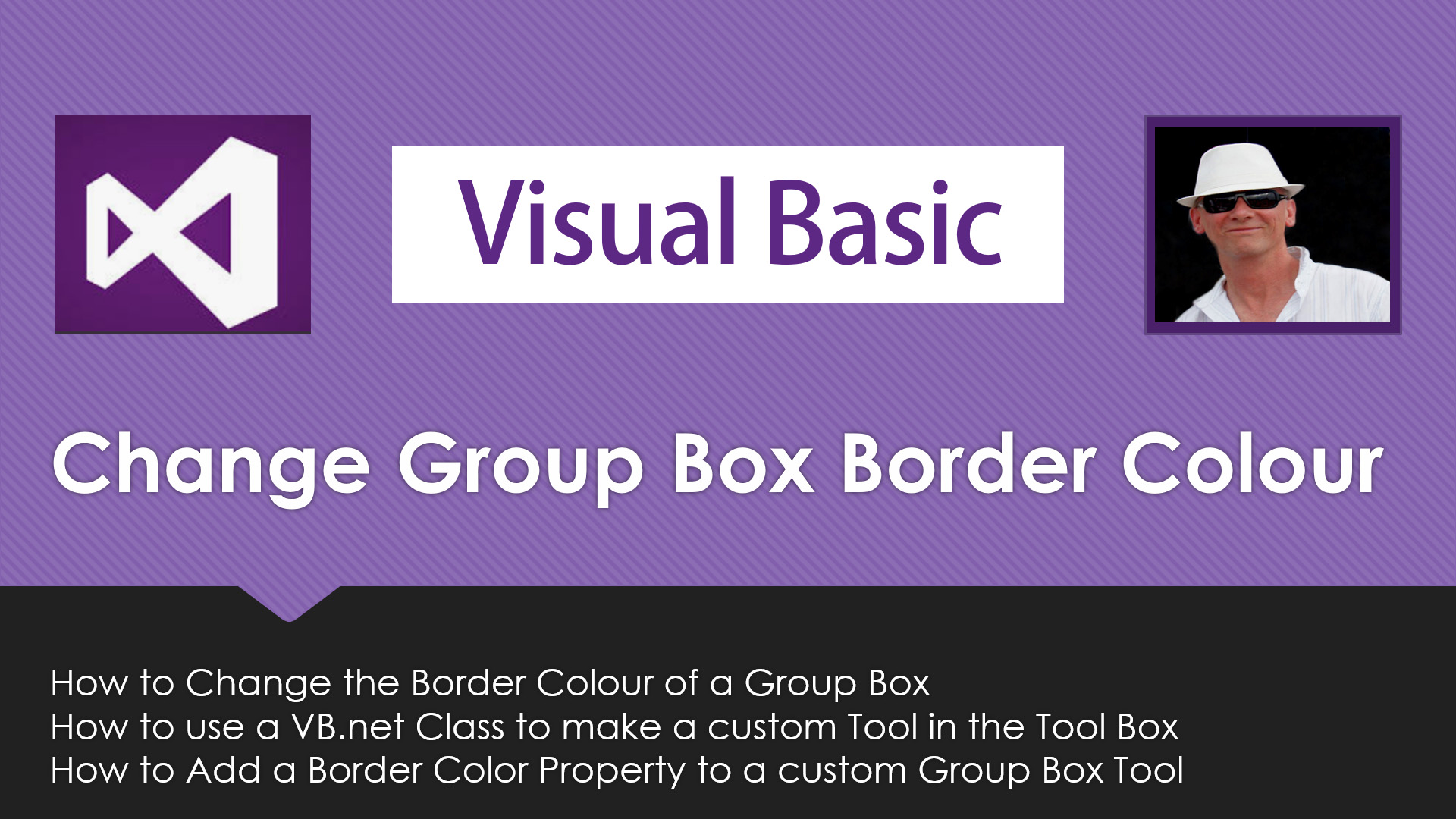
VB Change Group Box Border Colour
In this lesson we make our own custom Group Box which has a Border Color Property, and save it into the VB.net Toolbox by creating a "Class" called "myGroupBox.vb".
Click here to Go to Lesson

VB Copy Forms Between Projects
In this lesson we show how to copy a Screen Form from an existing VB Project into a New VB Project. We also show how to make the copied Form become the Form which runs first when the new VB Project is executed.
Click here to Go to Lesson
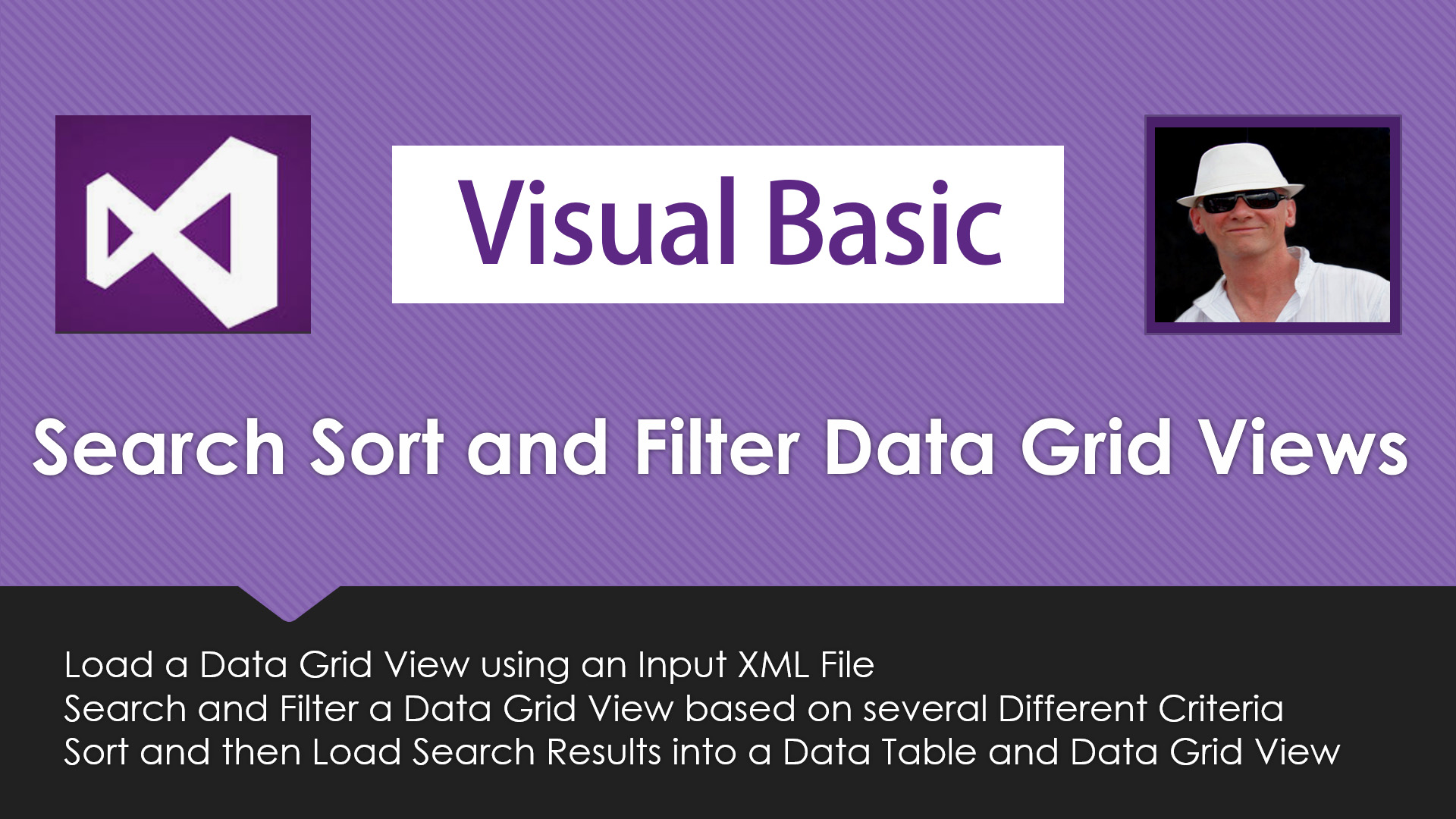
VB Search Sort and Filter Data Grid Views
In this lesson we read in an XML File of Doctor Medical Appointments, and then Search Filter and Sort this data using a program defined Results Data Table.
Click here to Go to Lesson
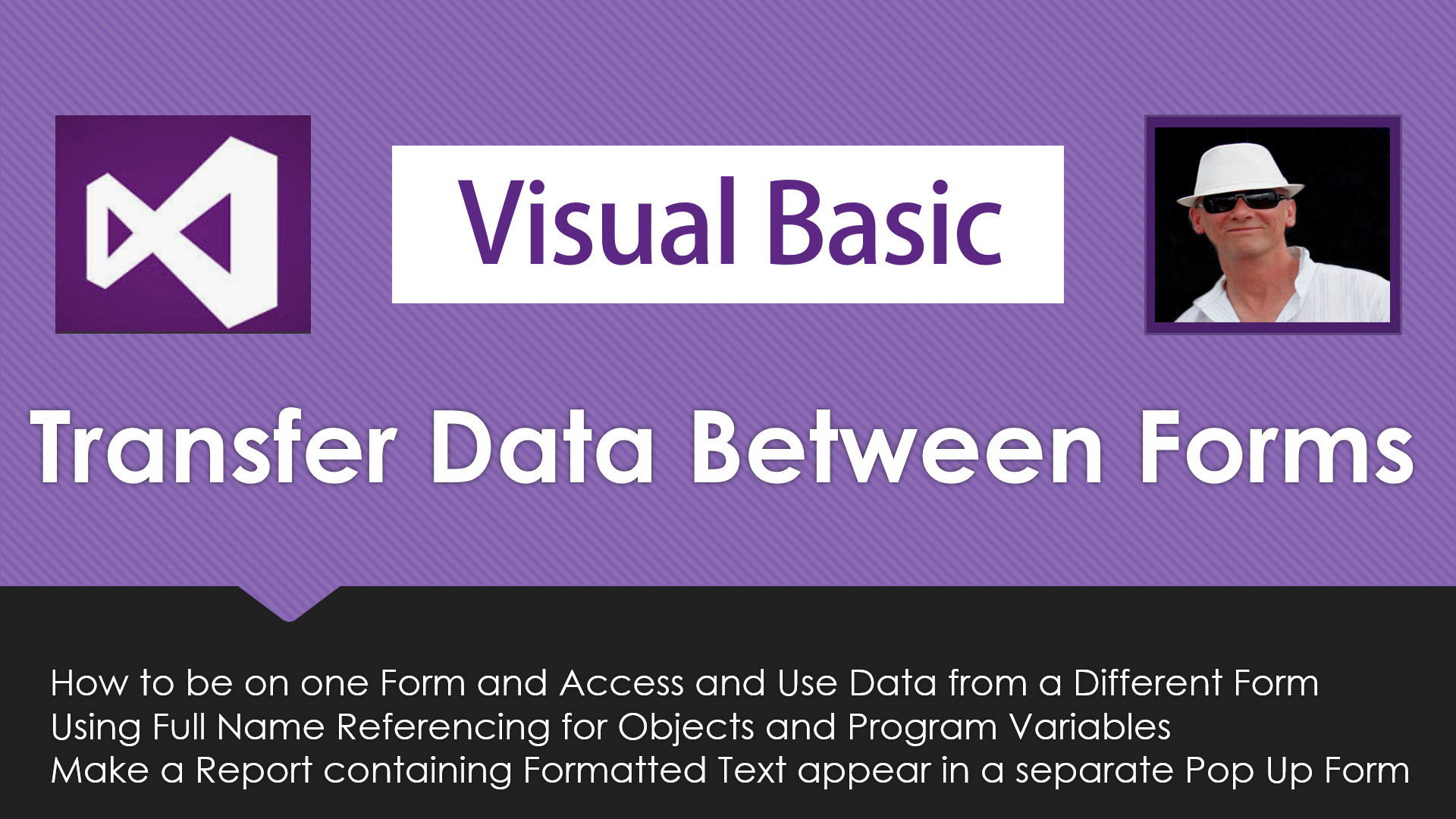
VB Use Data Across Multiple Forms
In this lesson we show how to transfer data values from items on Screen Forms, and from Program Variables across multiple Forms by using Full Name Referencing. We also make a "pop up" Email Text Form containing Summary Data obtained from a different Form.
Click here to Go to Lesson
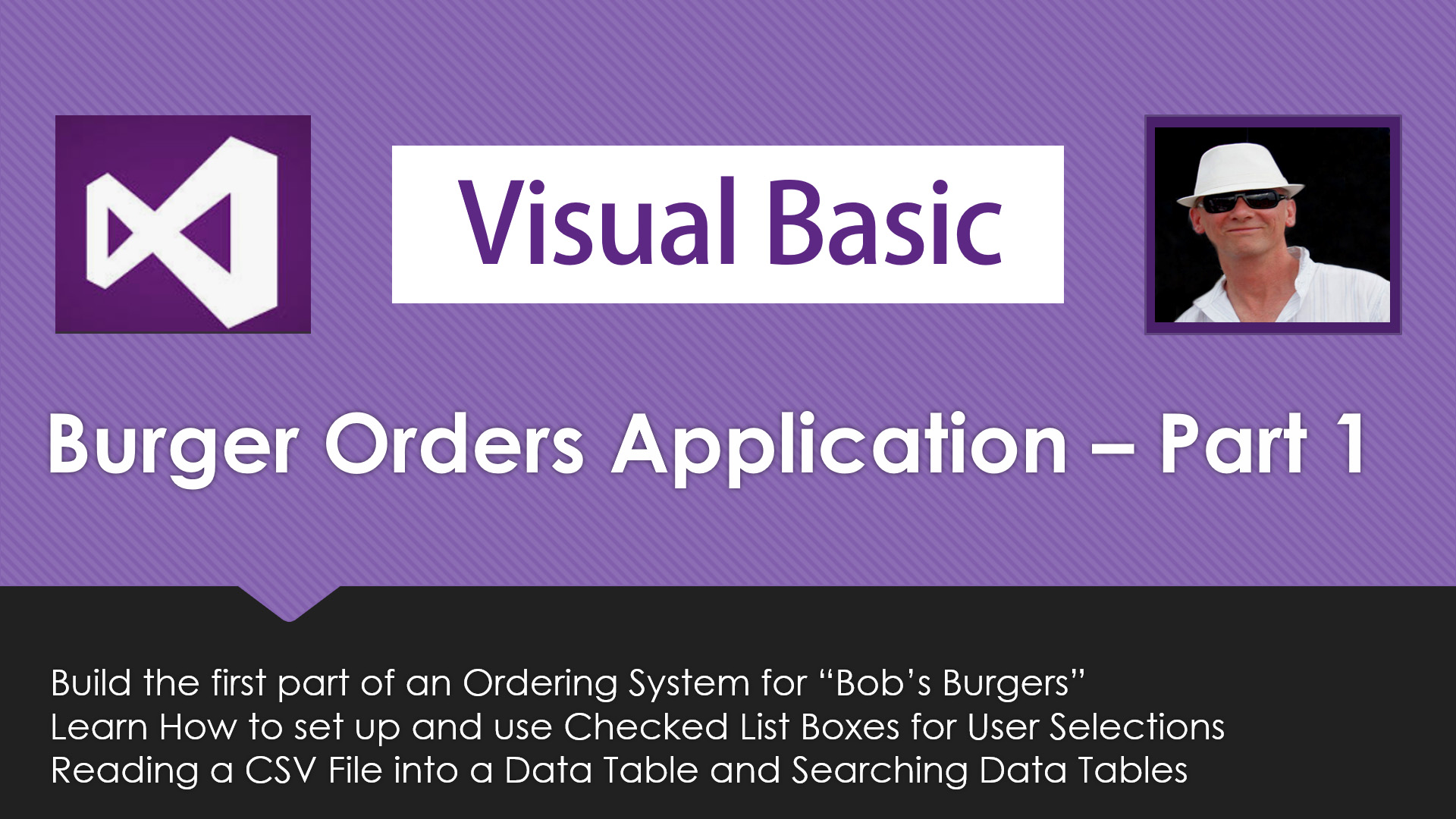
VB Bob's Burgers Ordering System Part 1
In this lesson we show how to build the first parts of a Food Ordering System for "Bob's Burgers". This lesson will be useful to anyone building a Customer Ordering System VB.Net Application.
Click here to Go to Lesson

VB Bob's Burgers Ordering Part 2
In this lesson we continue work on the Food Ordering System for "Bob's Burgers", and build on the work we have done previously on Data Tables, Data Grid Views, and CSV Files.
Click here to Go to Lesson
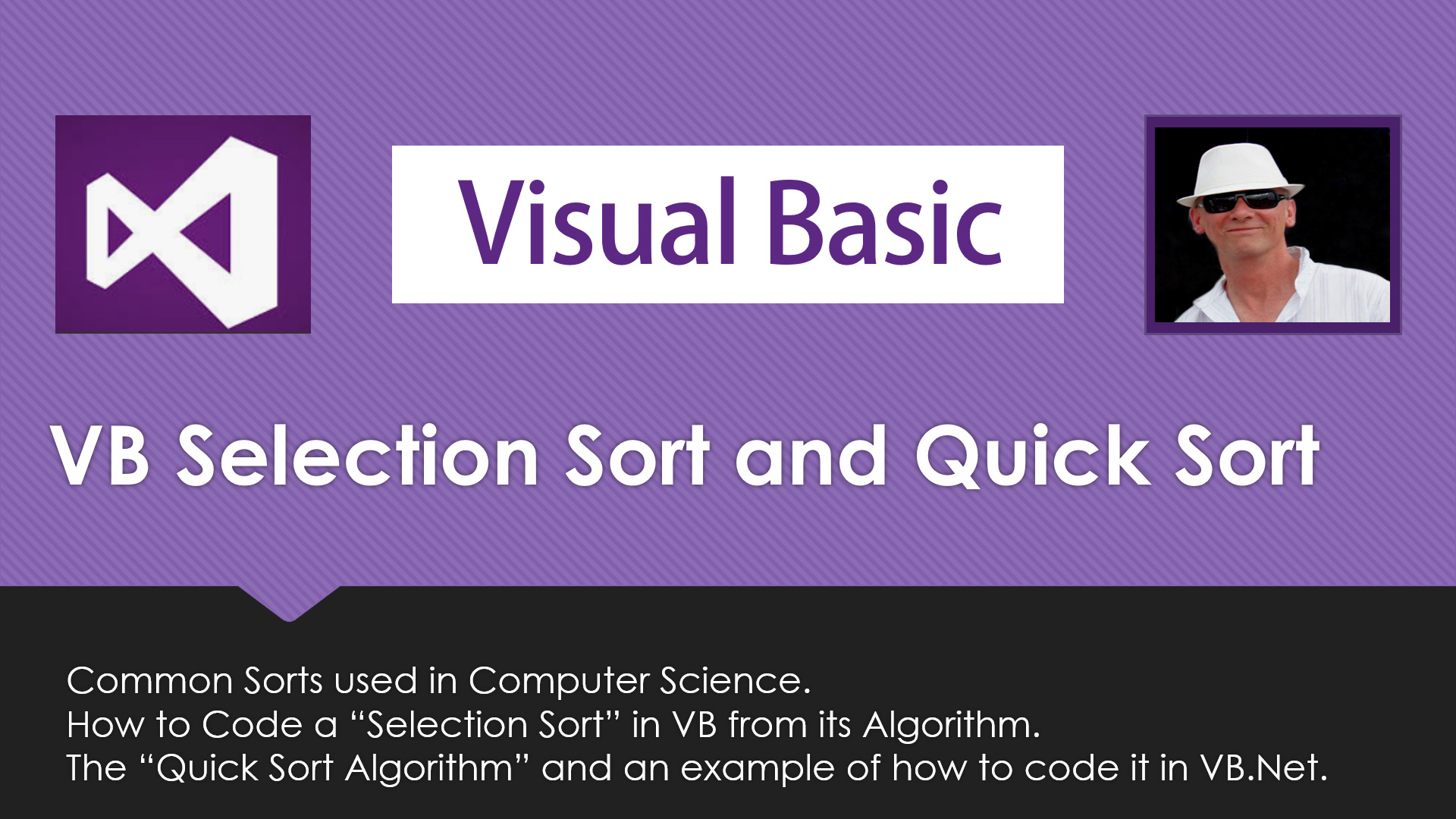
VB Selection Sort and Quick Sort
In this lesson we explain how Selection Sort and Quick Sort work, discuss their Algorithms, and show how to use them in VB.Net to sort arrays.
Click here to Go to Lesson
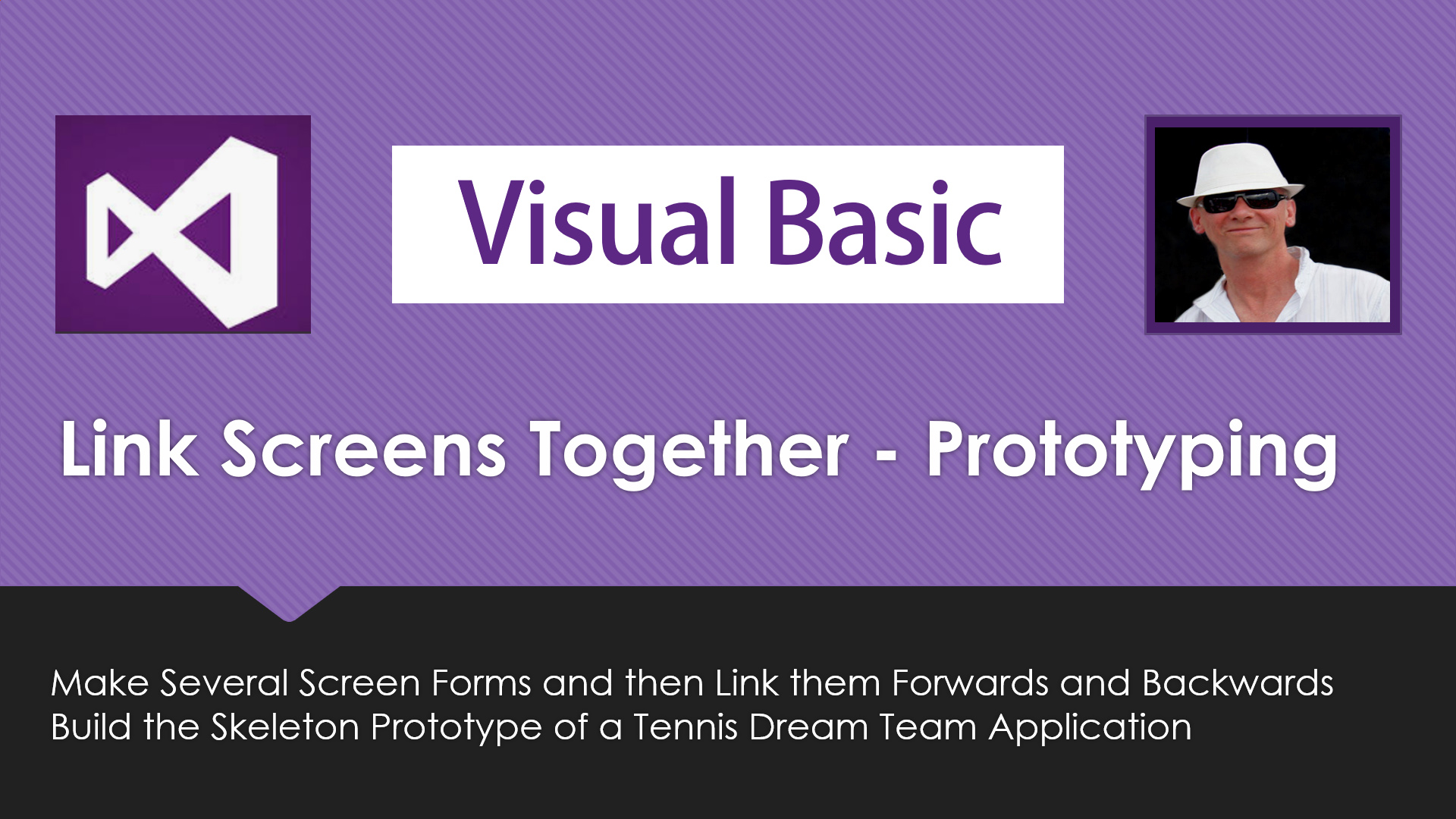
VB Link Form Screens Together
In this lesson we show how to Create a Multiple Screen Forms application driven by ONE Main VB Program.
Click here to Go to Lesson

T-Shirts Shop Form Build Lesson
In this lesson we learn about How To Use the VB.Net Toolbox to Create the Screen Form for a T-Shirts Shop.
Click here to Go to Lesson
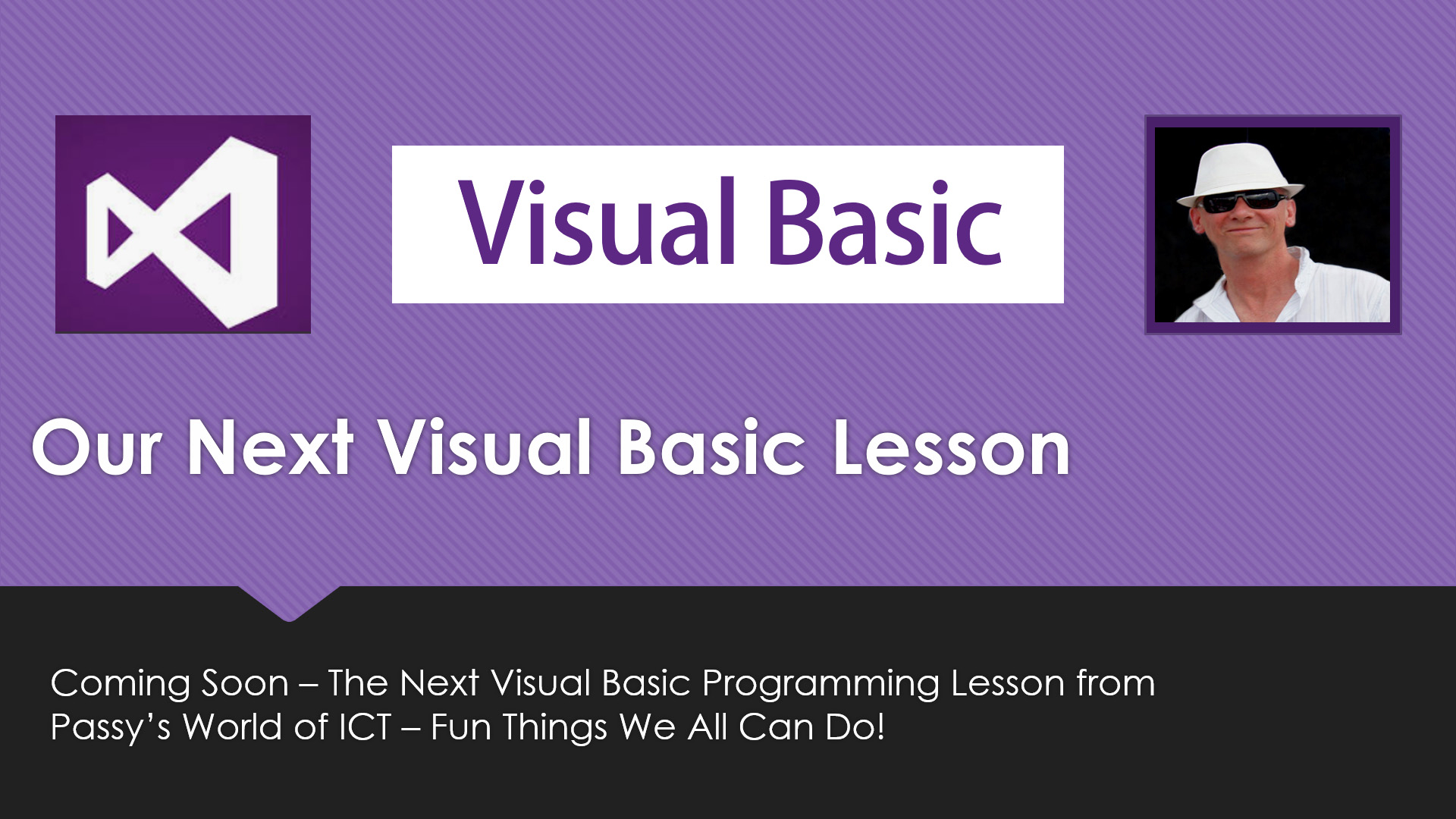
Our Next Visual Basic Lesson (Coming Soon)
In this lesson we show you how to do more Visual Basic Application Development using the World's best IDE for learning how to create Computer Programs and Applications.
Click here to Go to Lesson
